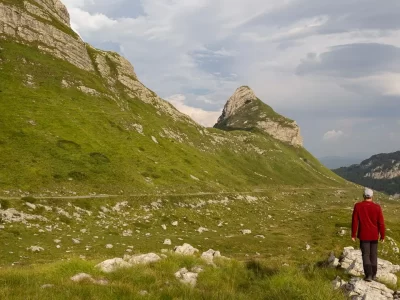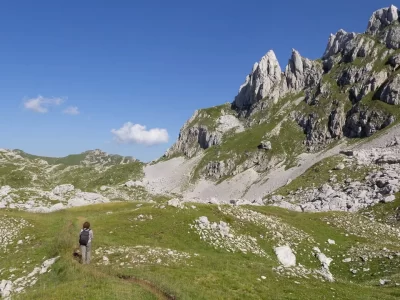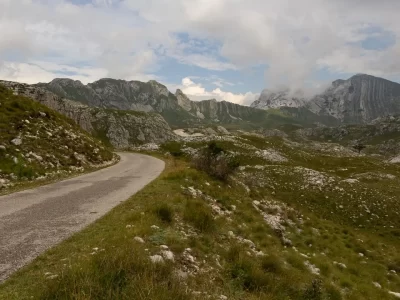Visiting Cetinje is a trip down memory lane with the clock set in the 19th and early 20th centuries, even though the city was founded in the 15th century.
Known as “Montenegro’s Old Royal Capital”, for a long time it was a pivotal cultural, political, religious, and economic centre.
Although Cetinje’s golden era is in the past and it may not shine as bright as when kings and queens ruled, it remains an important cultural hub with many museums, stately buildings, and with a Historic Core inscribed on the UNESCO Tentative List.
I visited Cetinje (pronounced SEH-teen-nye) twice. I loved learning about its rich history from the historical plaques installed across the city -which were helpful to write this post- and walking past monuments and gardens. I included a map to help you plan your visit.
Staying two nights in Cetinje will give you enough time to enjoy all the attractions at a relaxed pace. If you add a day trip to nearby Lovćen National Park, plan for three nights.
Disclosure: This post contains some affiliate links. If you make a purchase through those links I will earn a commission at no additional cost to you (zero, nada). To check the full disclaimer, click here.
This is what to see and do in Cetinje, the cultural enclave of Montenegro
Table of Contents
Monument to Ivan Crnojević (Cetinje’s Founder)
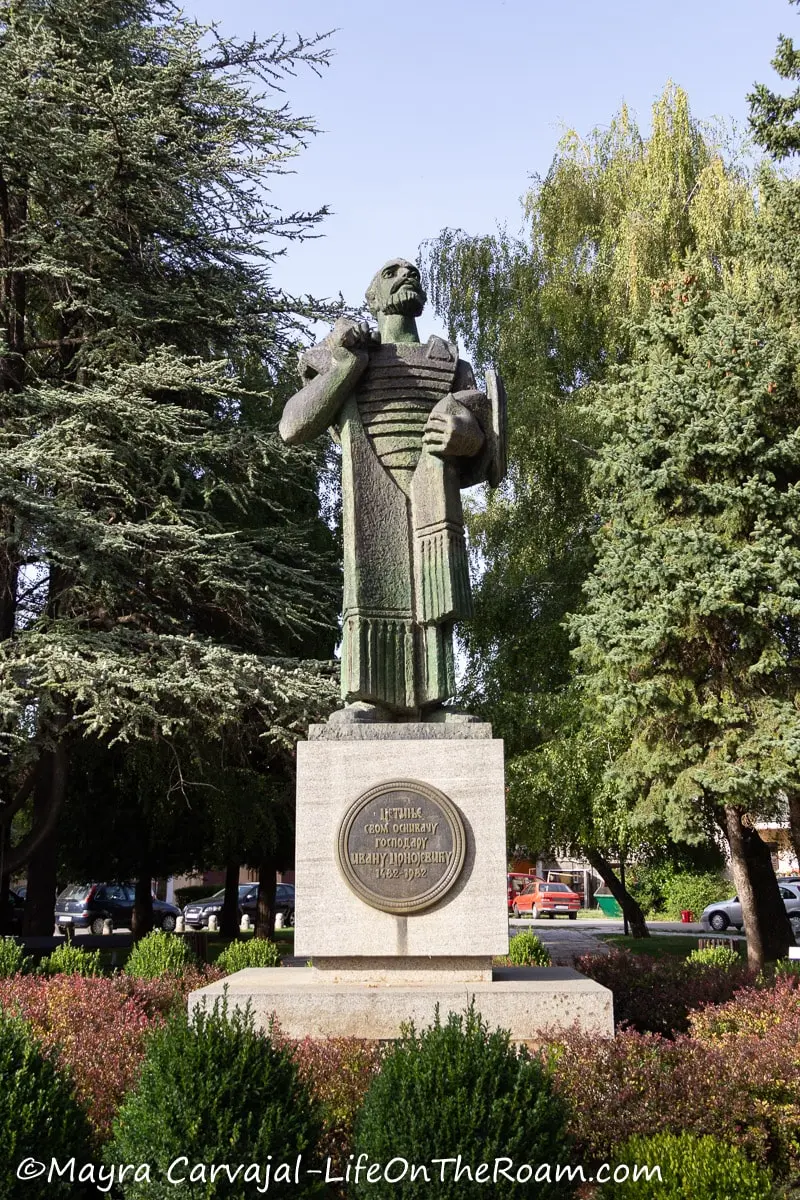
The Ottomans are coming! The Ottomans are coming! It was the late 1400s and the Turks were expanding their empire faster than a cat after a piece of fish. Time to get out of here! said Ivan Crnojević, moving the capital of the Principality of Zeta (how it was known back then) from a fortress in the Lake Skadar area to this plateau in the mountains.
Ivan became the founder of Cetinje, built a castle in 1482, and ruled the town with a progressive mindset until 1490, when he was succeeded by his son.
But at that time the Ottoman Empire was unstoppable and by the early 1500s the Turks were the big chiefs, demolishing Crnojevićs’ Castle.
This bronze statue by sculptor Ante Gržetić, located in a pretty small square near to parks, honours the well-respected leader.
Address: corner of Dvorski Trg and Novice Cerovića
Cetinje Monastery (Monastery of Saint Peter)
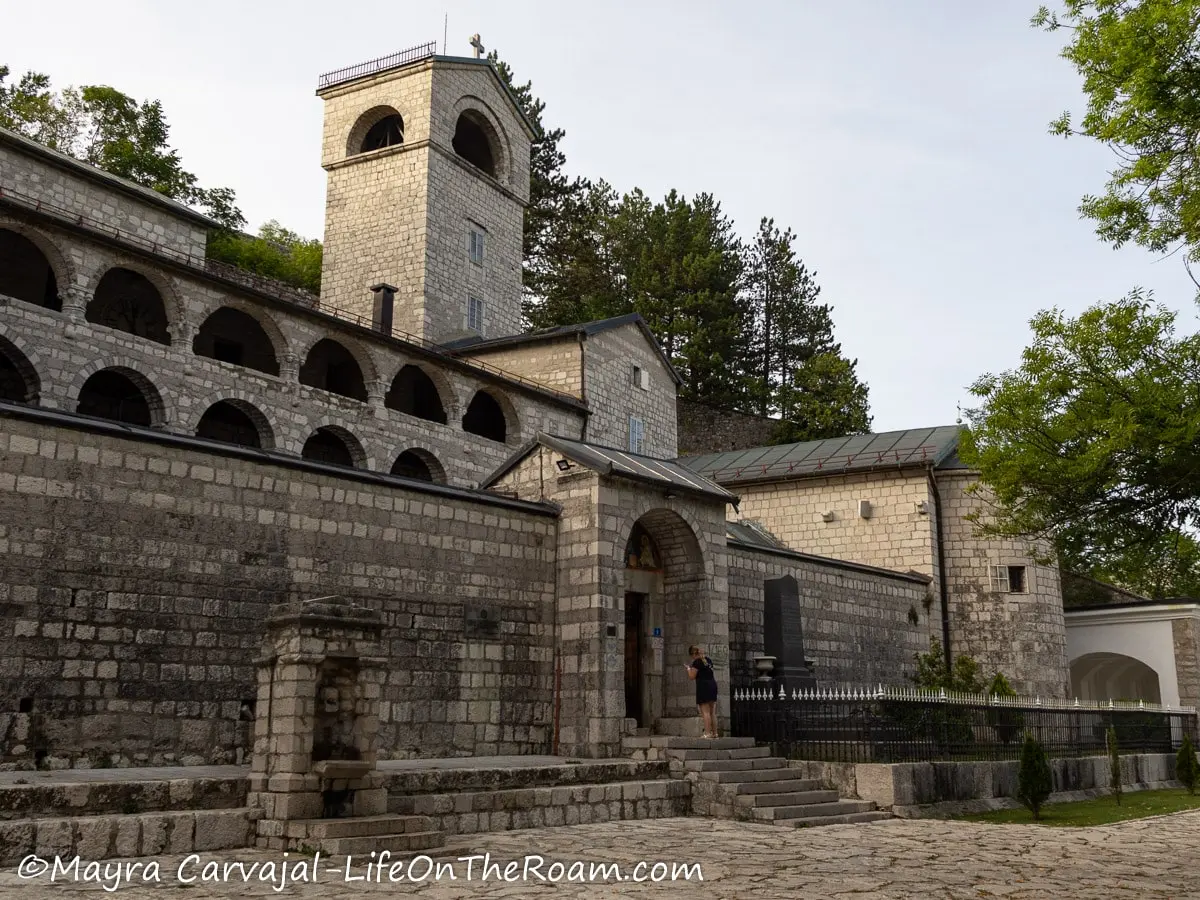
The Cetinje monastery you see today is version 4.0 of the original one, built at the early start of the 18th century by Danilo Petrović, on the grounds of the demolished Crnojevićs’ Palace.
During battles with the Turks it was burnt and demolished multiple times. The last rebuild happened in 1786, which is quite similar to today’s structure.
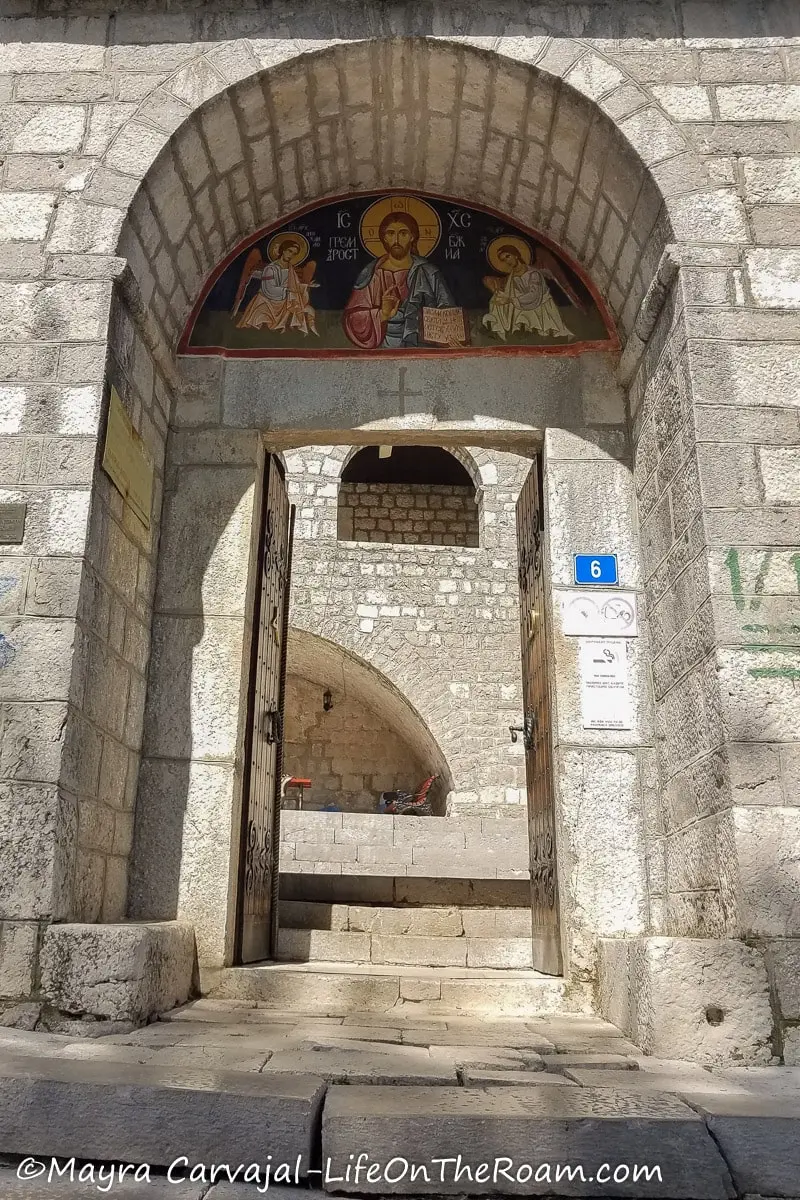
A dedicated room houses the Monastery Treasury, which holds some of the most important Christian relics: the right hand of St. John The Baptist and a piece of the Holy Cross.
To see them, the priest has to agree to take you to the treasury; we were fortunate he opened it for us. He then opened a chest commissioned by Russian Emperor Paul I when the relics were taken to Russia by the Knights of the Order of Malta in the late 18th century. Before, the relics were in Istanbul for centuries, guarded by the Knights of the Order of St. John.
The journey of these objects could be an Indiana Jones movie, with knights and kings and guardians. We had to pinch ourselves when the priest opened the golden chest adorned with jewels to see the relics (no pictures, I didn’t dare break out the camera out of respect).
With the end of the Russian monarchy the Yugoslav Royal family became the new guardian until the start of WWII, when they were transferred to the Ostrog Monastery. They stayed there until 1952 before finally arriving at the Cetinje monastery.
You can also see other historical and sacred pieces such as engravings, embroidery and icons dating as far back as the 13th century.
Dress code: to enter the monastery you must dress modestly and cover your shoulders and knees.
The National Museum of Montenegro
The National Museum of Montenegro is an institution that oversees five museums and a mausoleum spread across the historic centre of Cetinje, all within walking distance of each other. It also includes two other nearby sites: the birthplace of Njegoš in the village of Njeguši and his mausoleum in Mount Lovćen, and Lipa Cave, a natural monument.
You can visit them separately and buy the tickets at each location or you can save money by getting a combined ticket to visit several museums and sites.
All the four museums I list below are open everyday: 9AM-5PM. SEASONAL HOURS: Mon. to Fri.: 9AM-3PM from mid-November to mid-April. They all have signs written in English and Montenegrin.
The History Museum and the Art Museum
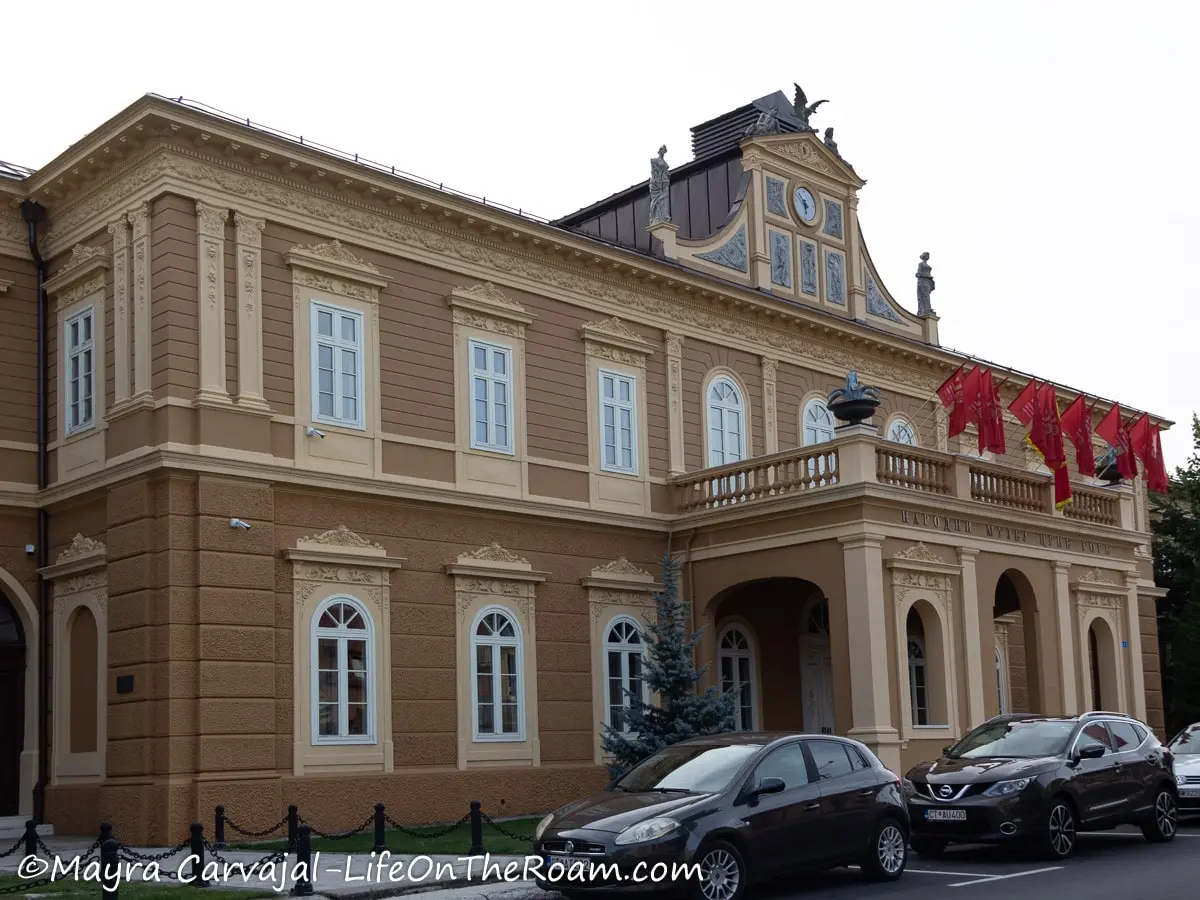
The History Museum and the Art Museum both occupy what was the Government House (Vladim Dom), a neo-Renaissance-style property built in 1910.
At the Art Museum you’ll see Yugoslav art from the 19th and 20th centuries. The work of the Montenegrin artists in the exhibit, many of whom studied in Italy and Russia, falls under the modern art movement, with good examples of Impressionism, Expressionism, Constructivism, and Surrealism.
The collection includes paintings, prints, sculpture, applied arts, and sacred arts from the 17th to the 20th century.
If you want to see a masterclass in composition run to see “The Fencing Lesson”, by Paja Jovanović.
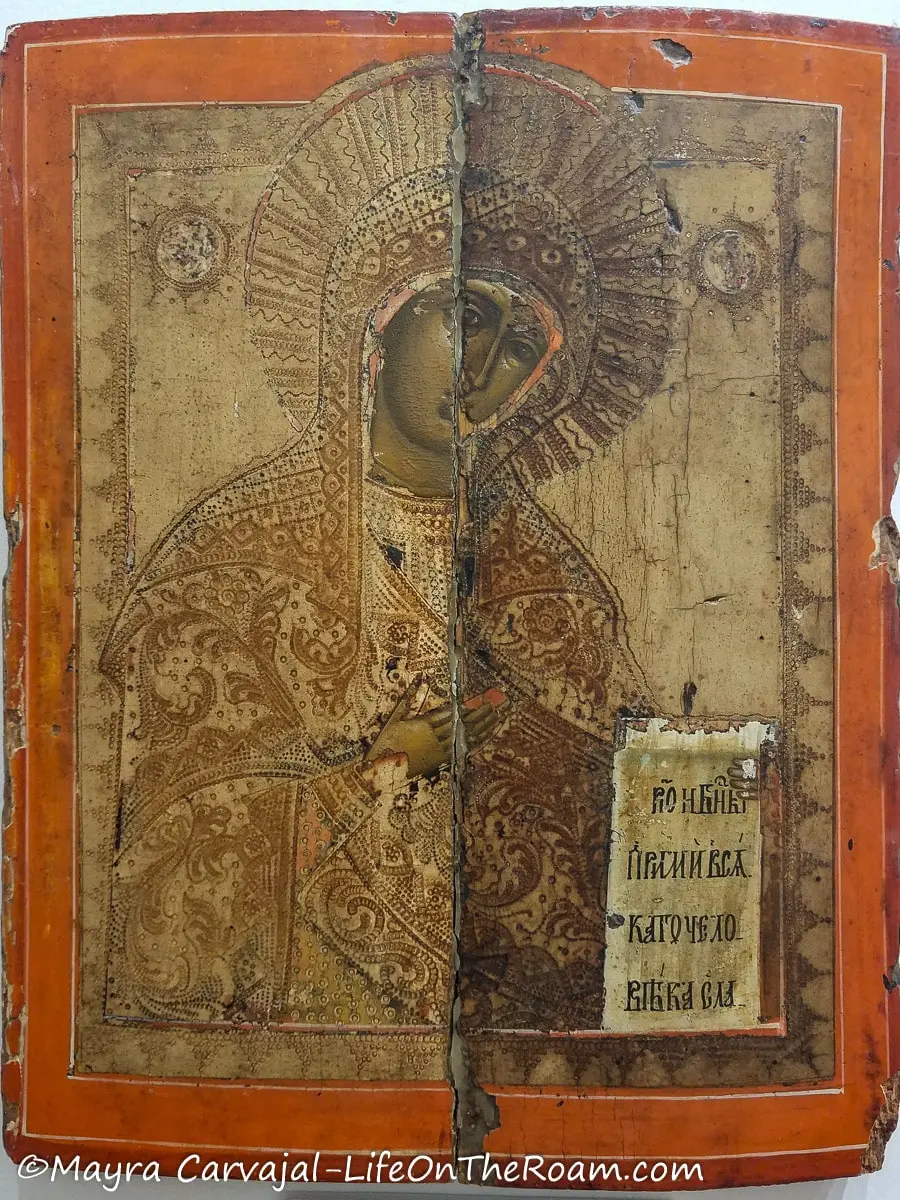
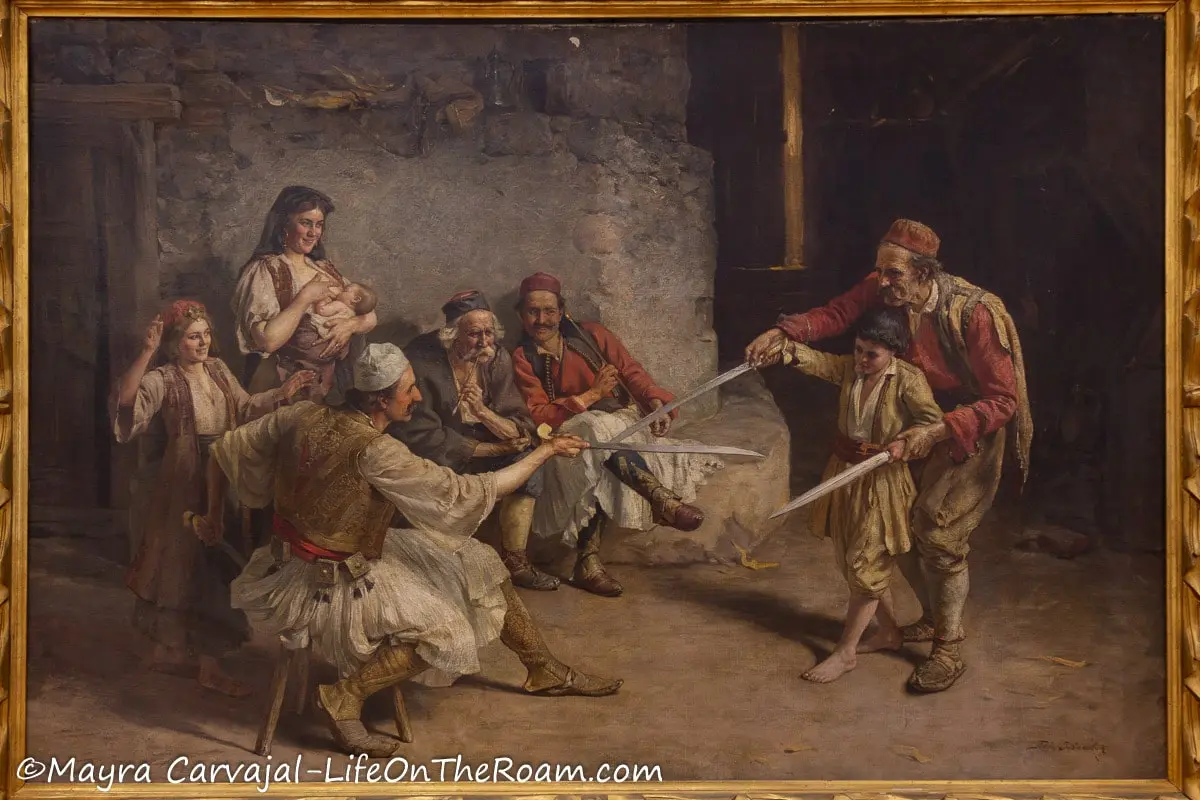
It was interesting seeing paintings of Montenegro’s landscape from the 1960s and 70s and comparing how much places like Ulcinj and Sveti Stefan have changed over time.
I loved the artwork exhibited here.
At the History Museum you’ll find a complete timeline of the history of Montenegro.
I saw a few pieces of artifacts excavated from archaeological sites across the country, including pottery, gold and silver jewelry from a necropolis in Budva (4th century B.C- 6th century A.D.) and objects from a cave near Perast, from the neolithic period.
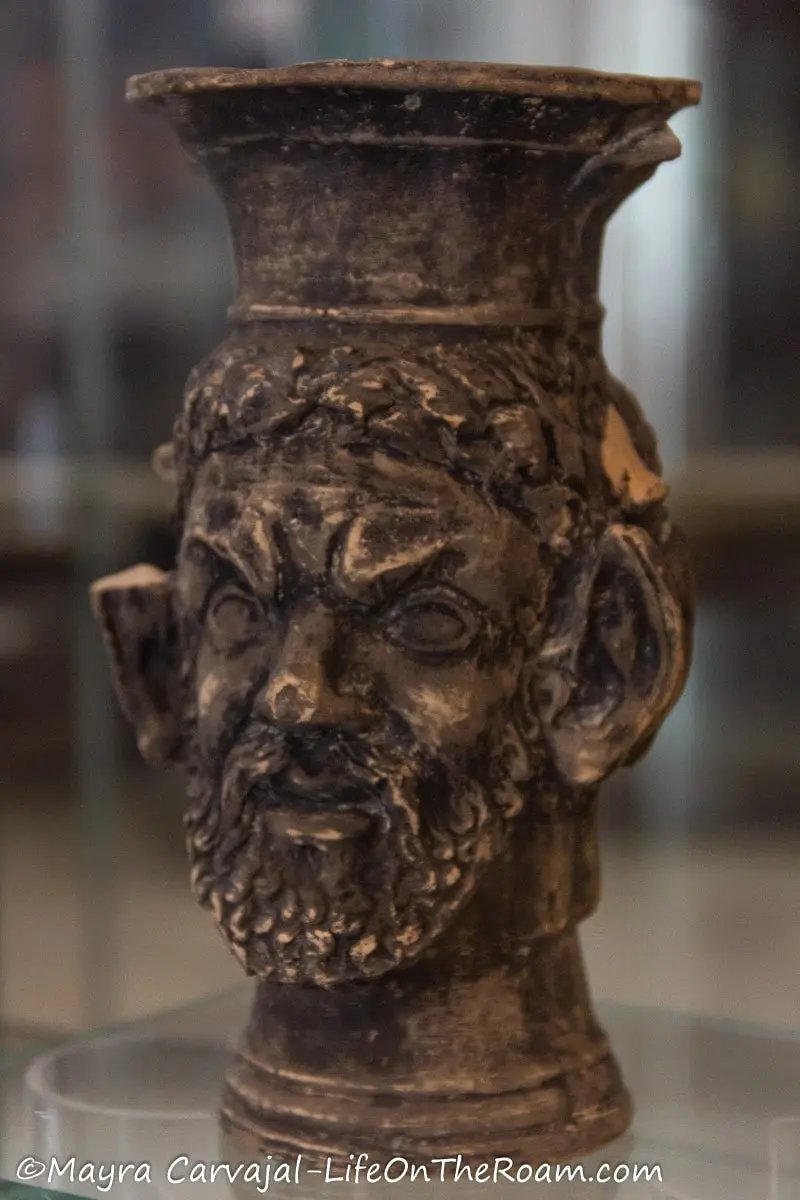
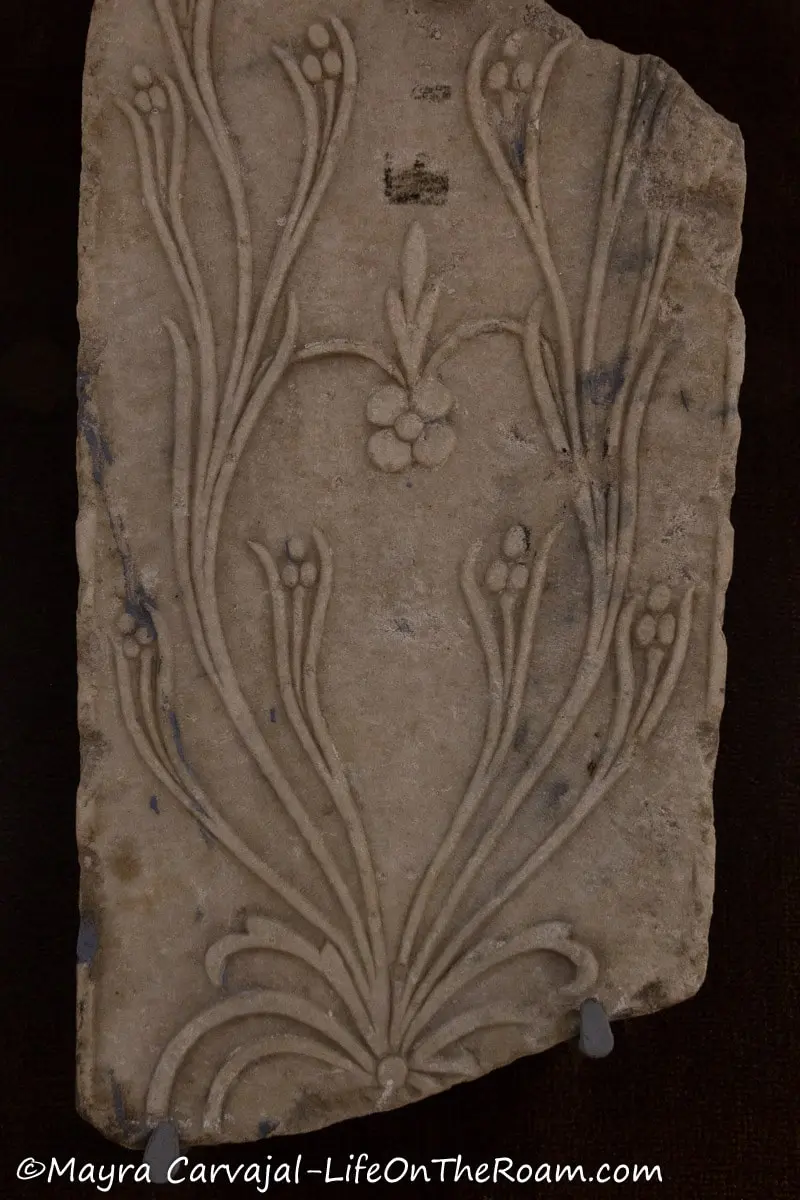
Pictures, historical maps, reproductions of frescoes adorning churches across the country, weapons and a few more objects narrate the events before and after the annexation to the Venetian Empire and the fights against the Ottoman Empire before independence.
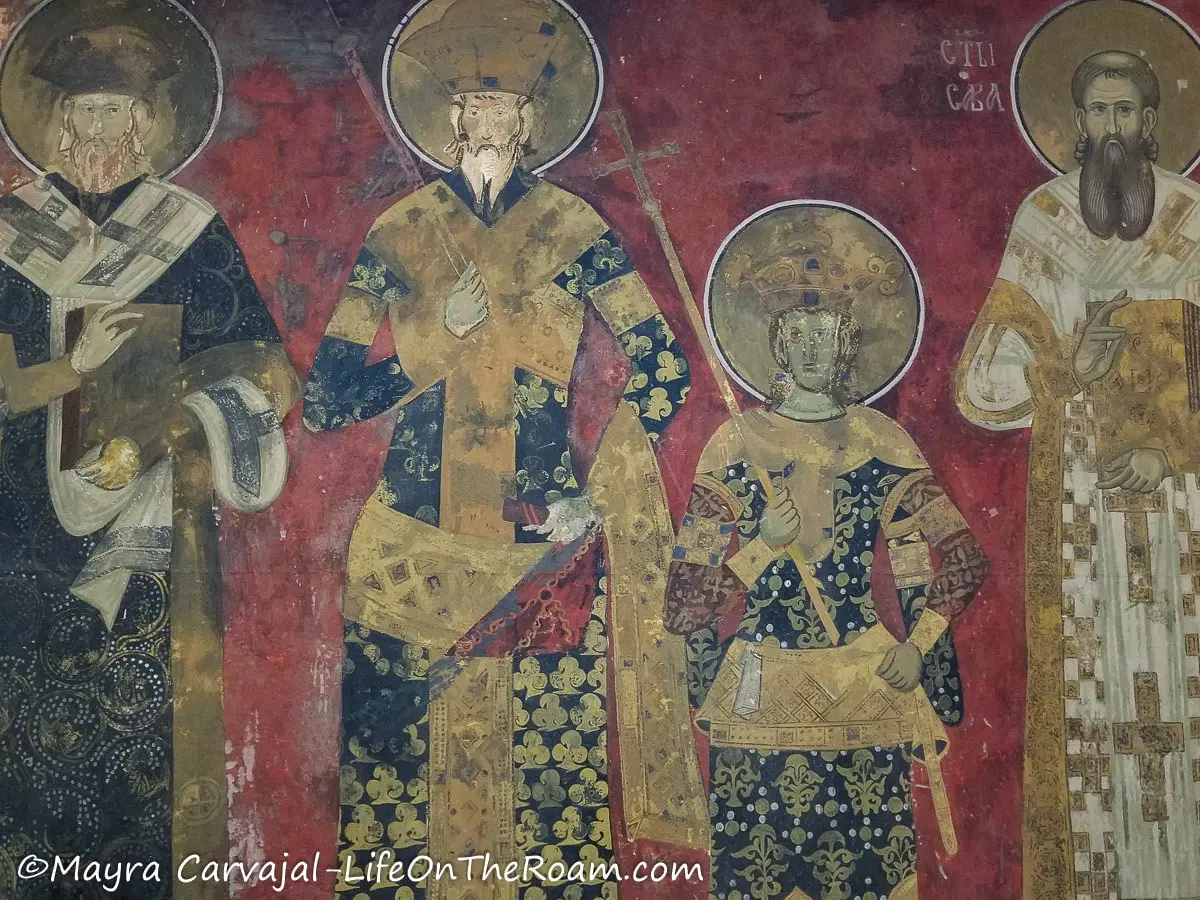
There’s a large section dedicated to the dynasties that ruled the Kingdom of Montenegro.
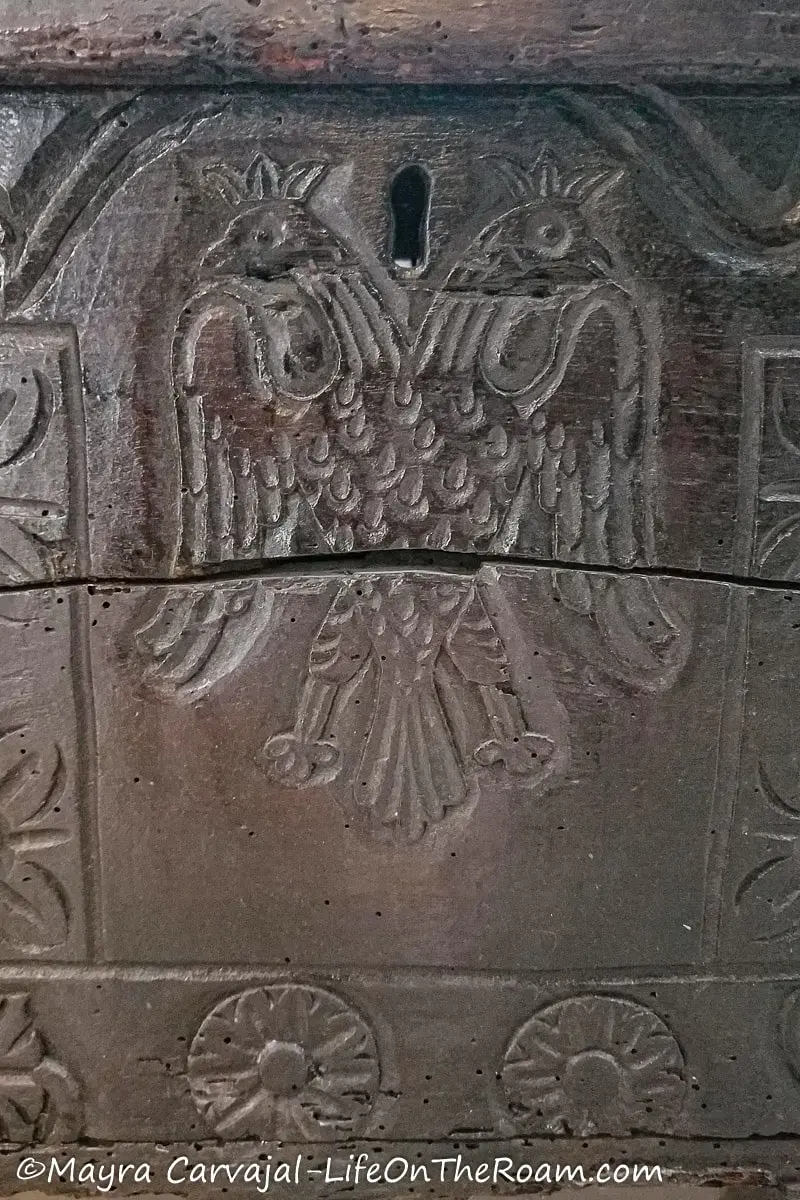
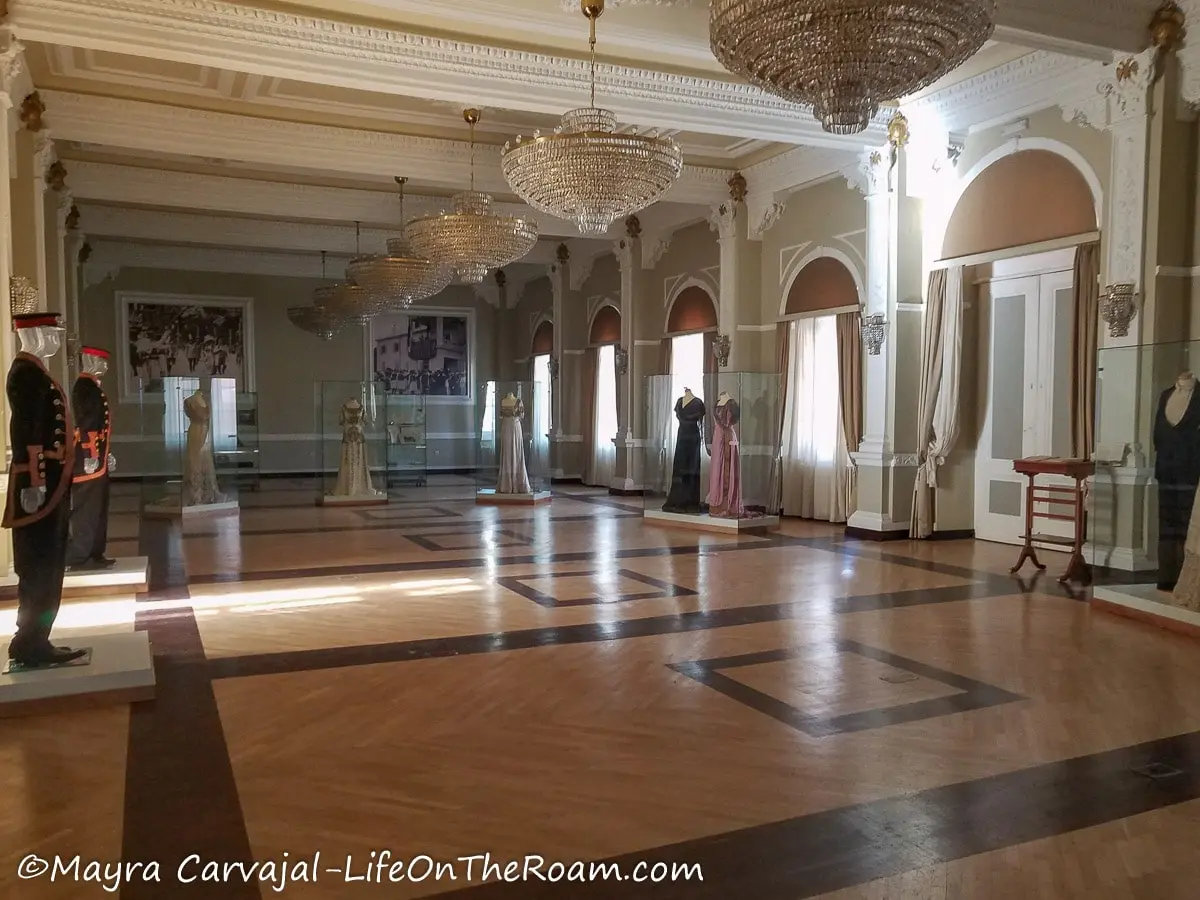
You’ll learn about the World Wars, the rise of the Communist Party of Yugoslavia in Montenegro and how they became part of the SFRY (Socialist Federal Republic of Yugoslavia).
It’s a fascinating history and there’s a lot of reading which I don’t mind, but if you’re not that into history your visit may be shorter than mine.
However, there’s one thing I wouldn’t skip: The Icon of Our Lady of Philermos.
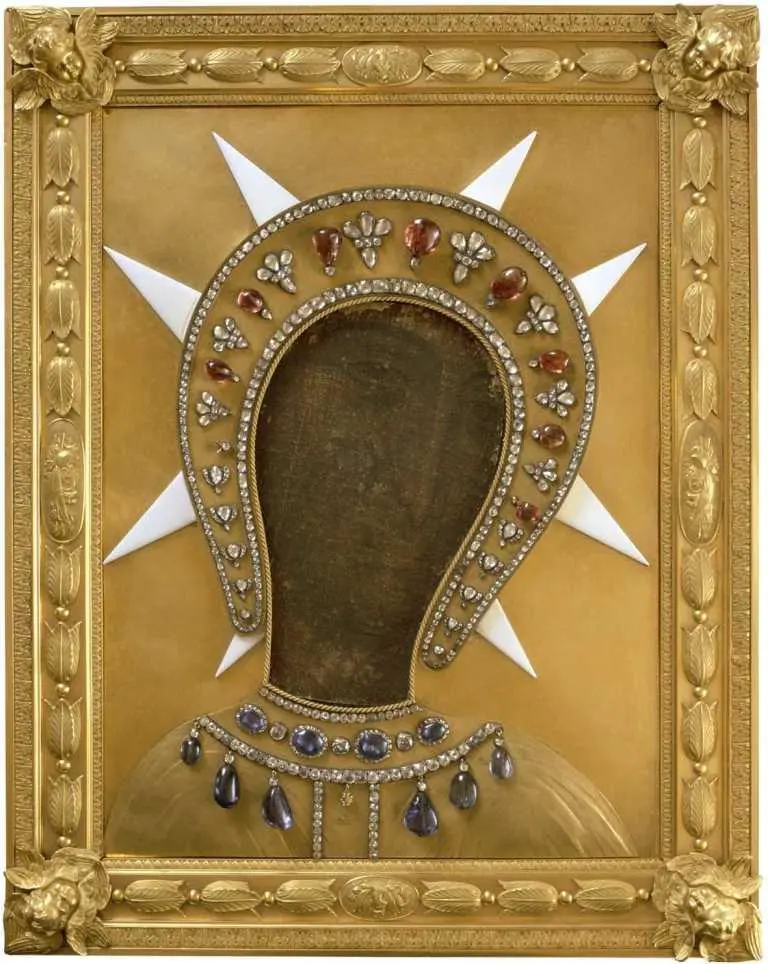
In a dimly lit room with a soft blue light (aptly named The Blue Chapel), you’ll find this Christian relic considered a masterpiece. It’s the oldest preserved portrait of Virgin Mary, painted by Luke The Evangelist in Jerusalem (allegedly).
The first traceable record of the icon goes back to 1395. Like the two other relics sitting in the Centinje Monastery, it passed through several Orders of Knights before reaching the hands of Russian Czar Paul I. He commissioned a riza (a metal covering) in gold, adorned with rubies, brilliants, and 270 diamonds.
After being protected in several European capitals it arrived in Montenegro in 1941 and put on public display in 2002.
Address: Novice Cerovića
General admission: €5
The Ethnographic Museum of Montenegro
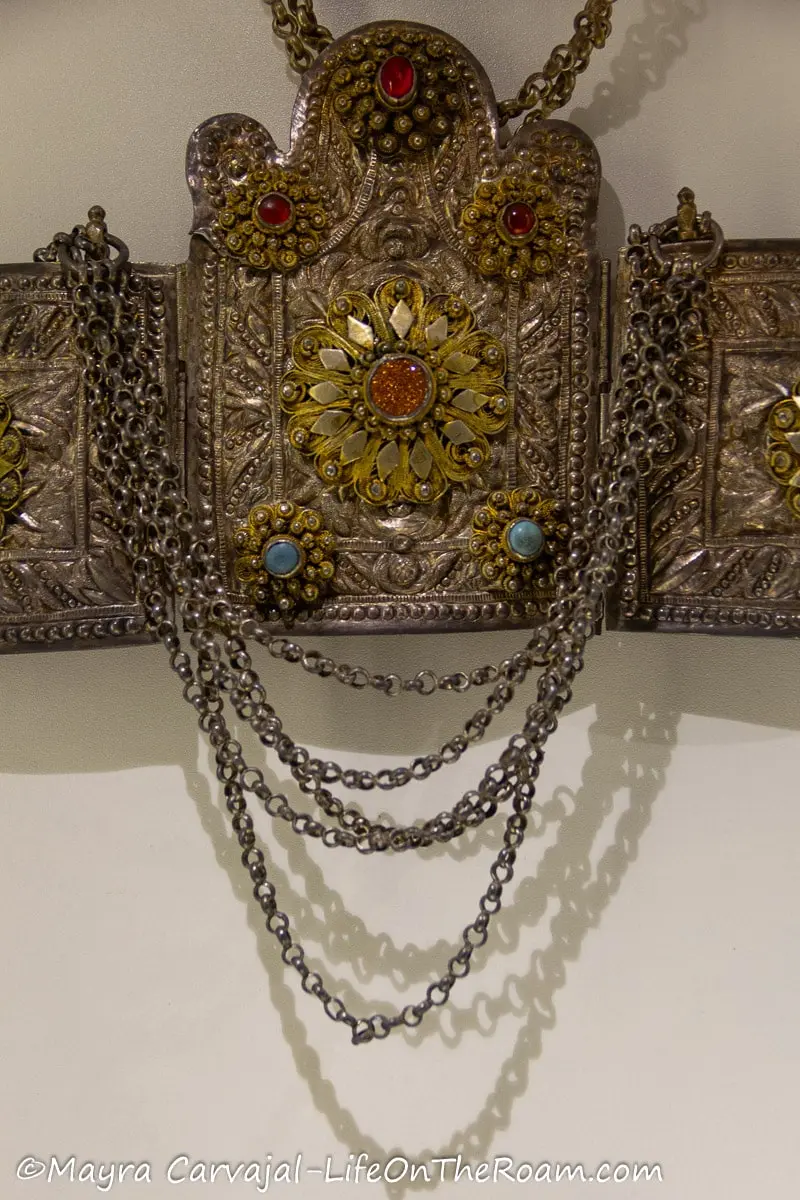
The Ethnographic Museum in Cetinje, located in what was the Serbian Embassy, is one of the best curated in Montenegro, compared to the other museums I visited in the country.
You’ll learn about the culture, traditions, and socioeconomic development of the region through signs and a showcase of artifacts that look more like an art display.
Check out the beautiful carvings on distaffs (an accessory to process wool and yarn in textile production) and the ornamentation of the metal dishes used for washing hands and prepare food.
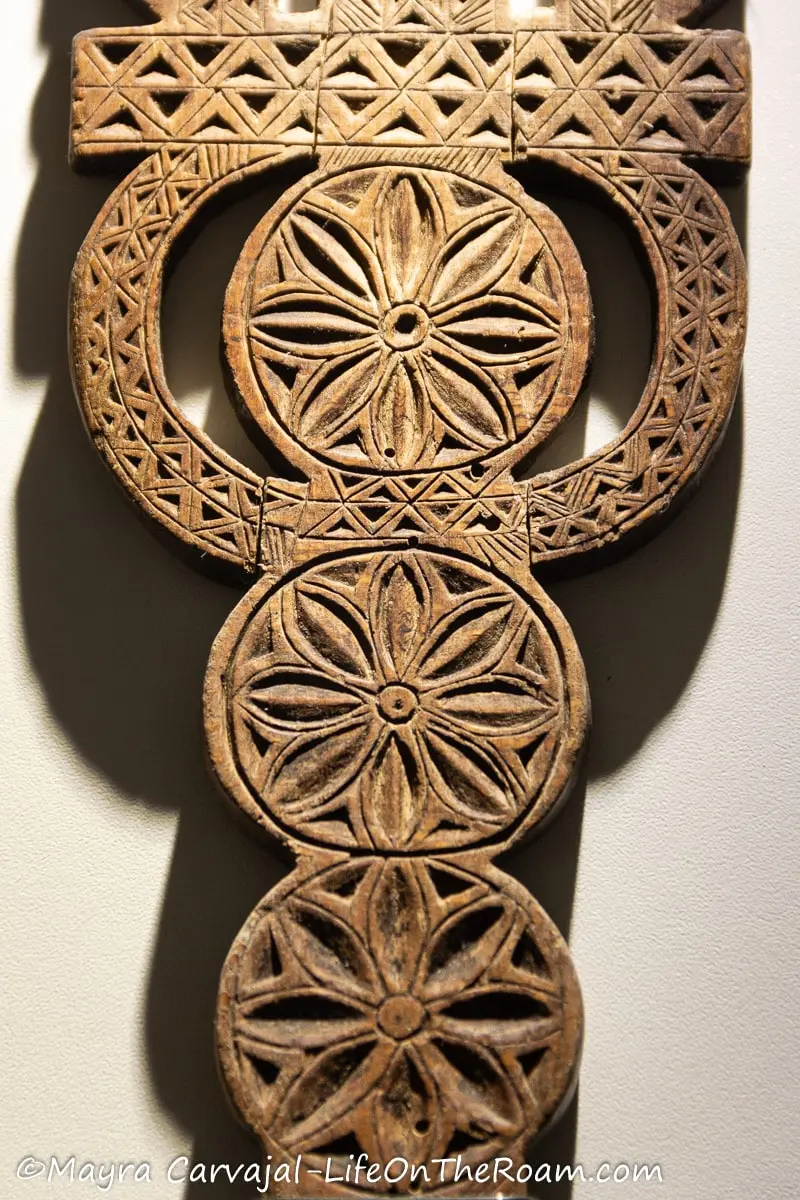
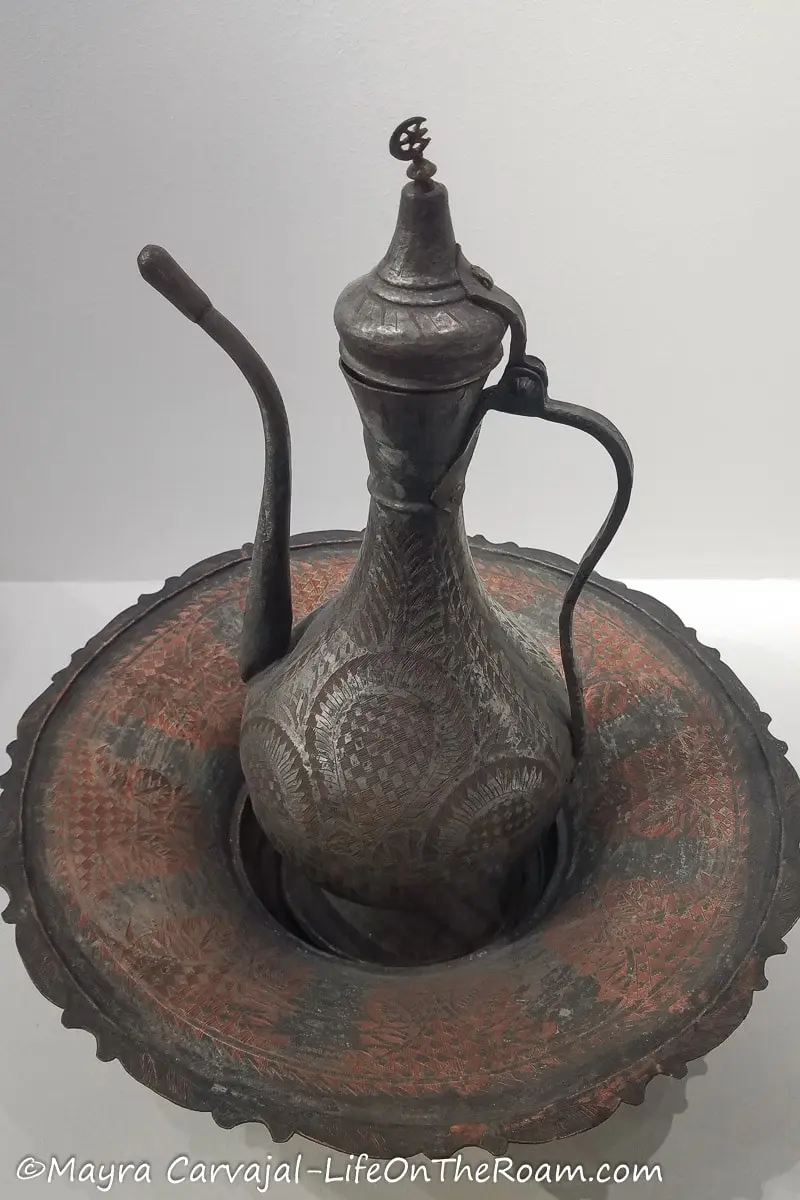
Or the craftsmanship reflected in musical instruments, chests, and wooden seals.
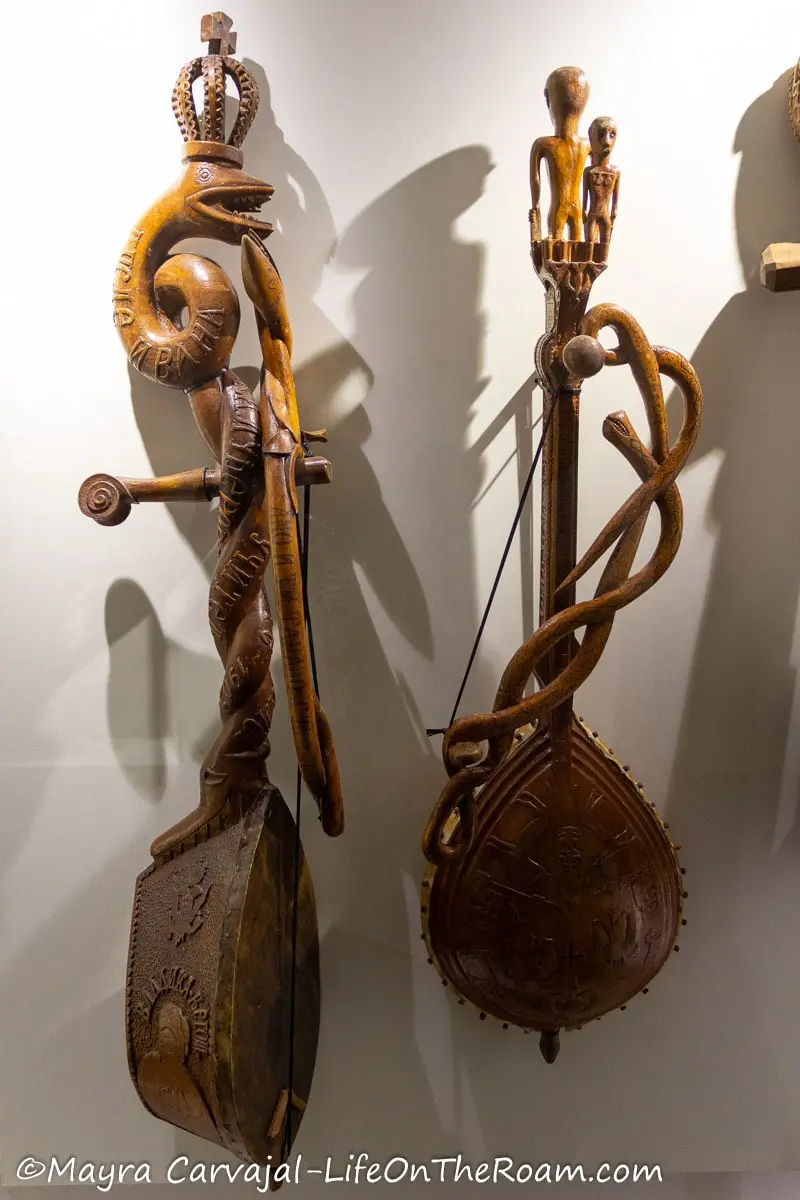
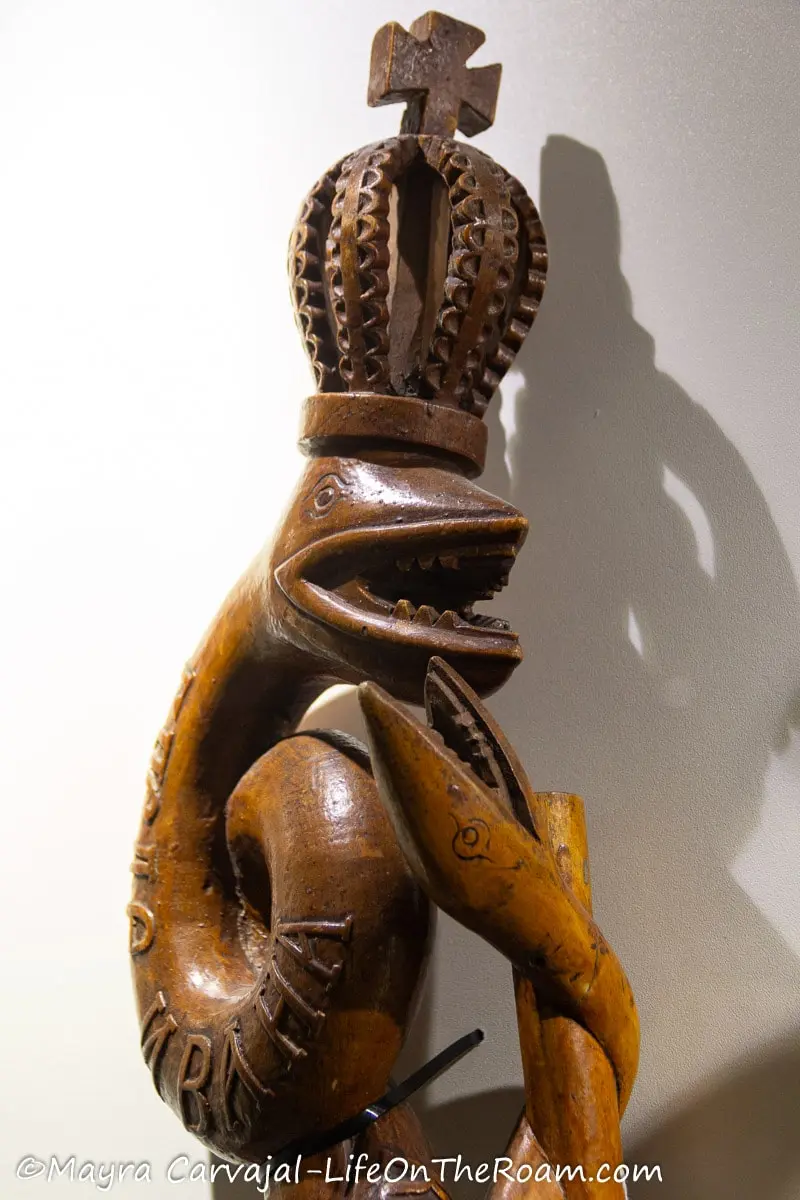

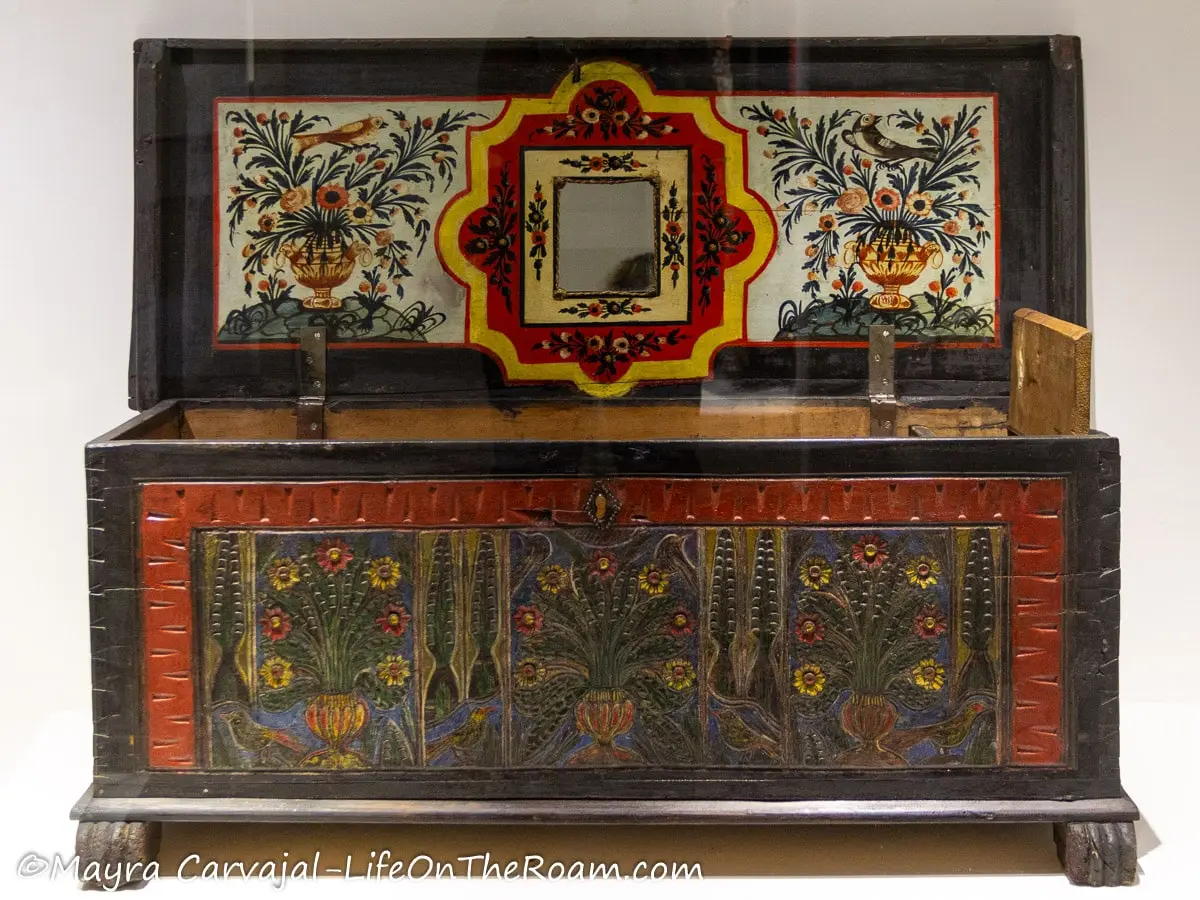
There’s also a traditional costumes exhibit, including knitted wool items and accessories.
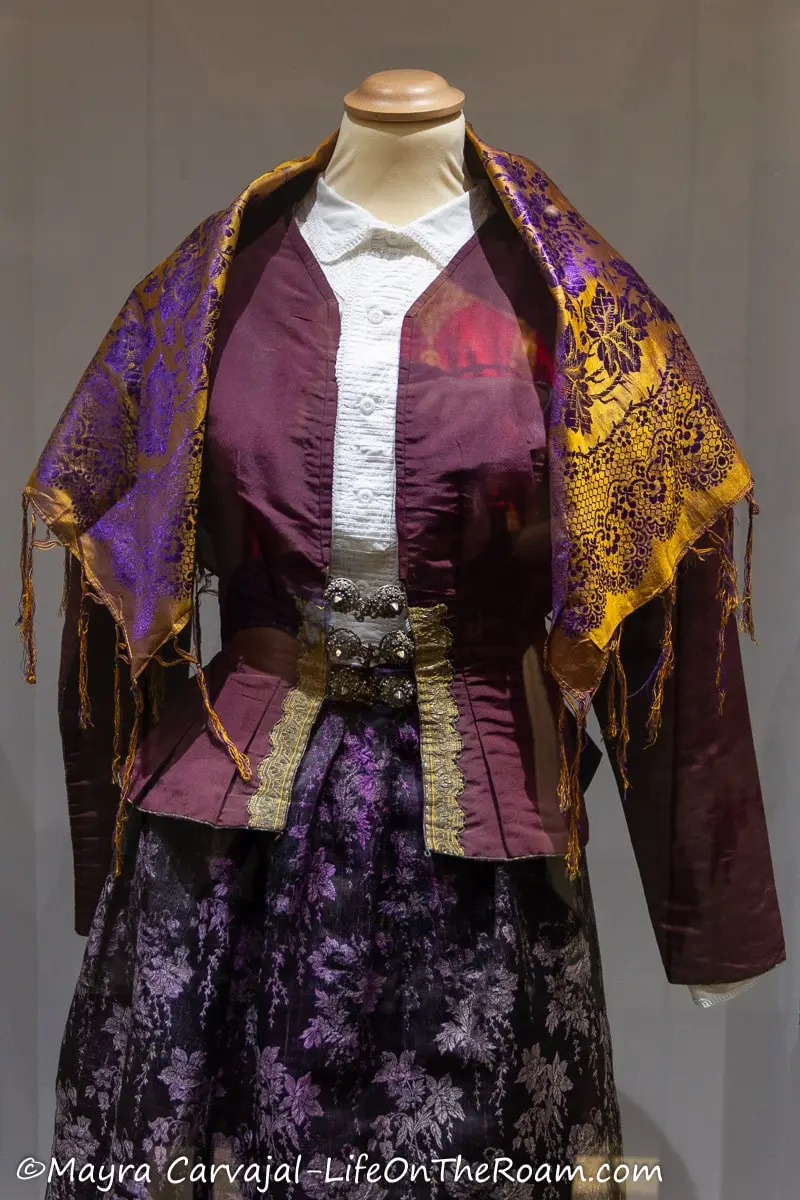
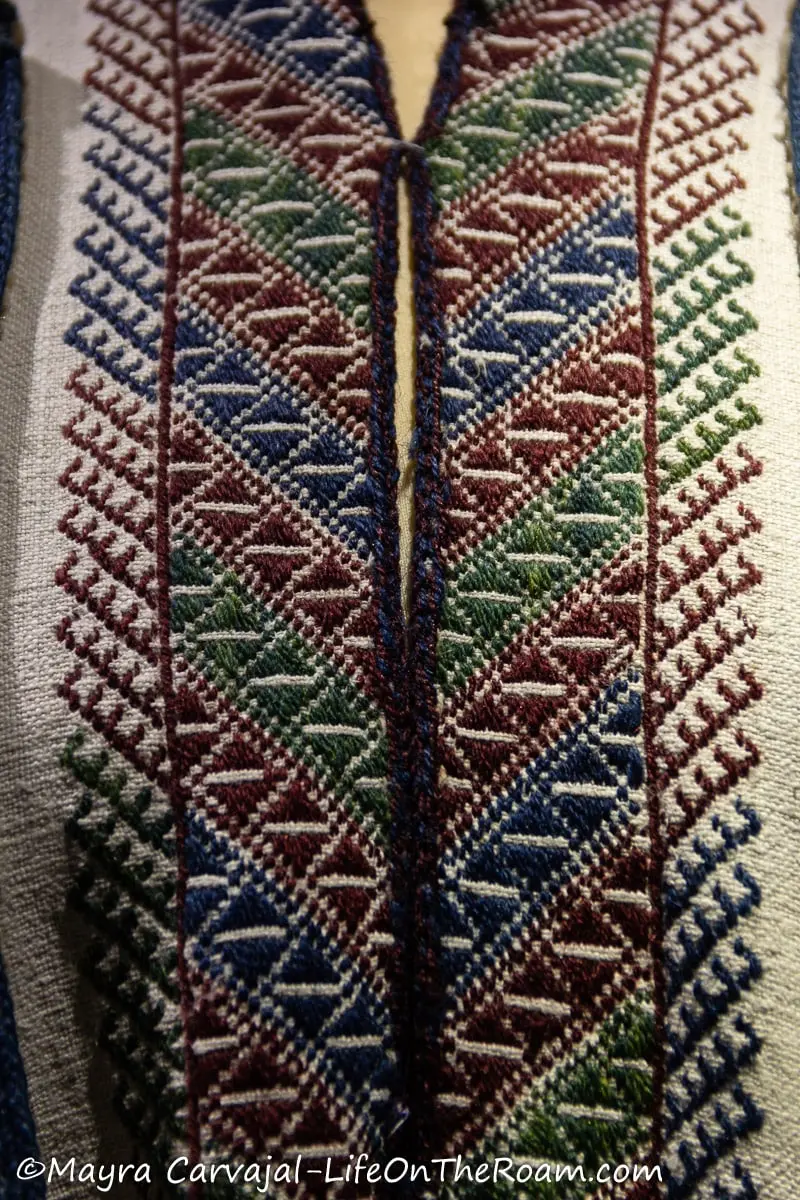
It’s one of my favourite museums in Montenegro.
Address: Dvorski Trg (across King Nikola’s Museum).
General admission: €4
King Nikola’s Museum
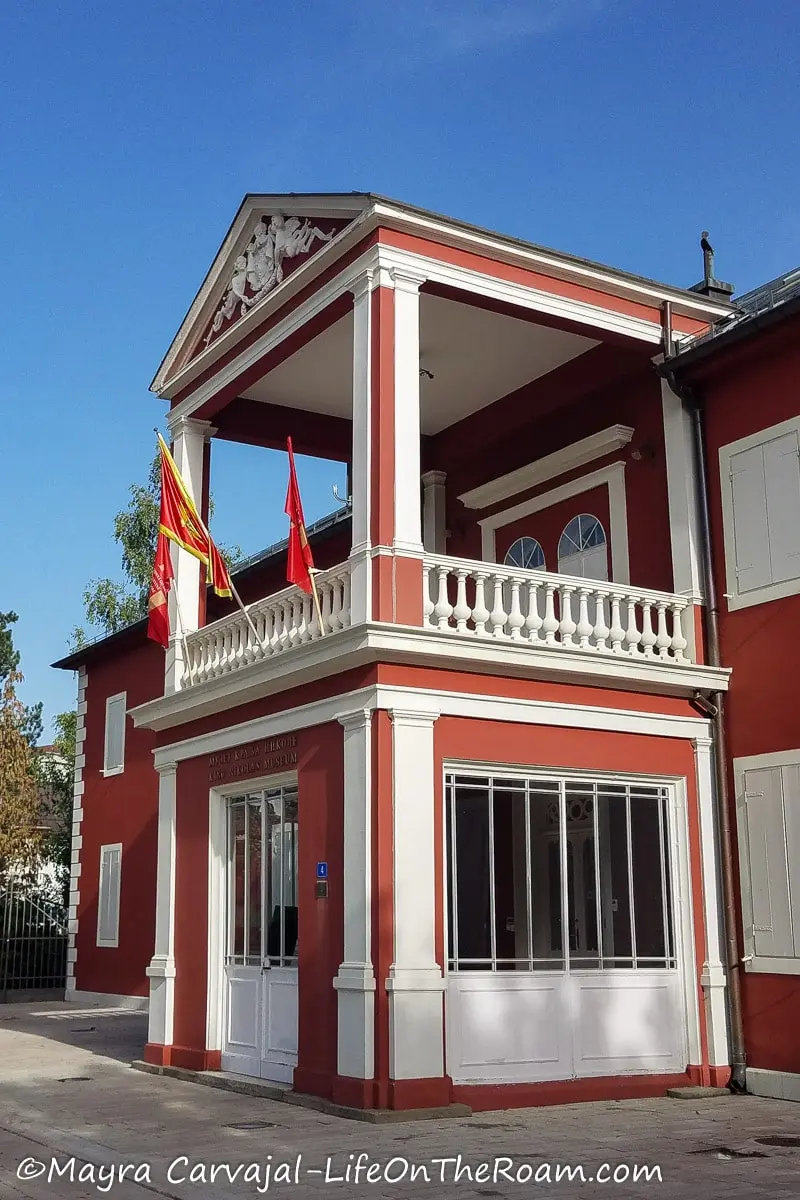
This was the new residence of King Nikola after moving out of the Biljarda at the end of the 1860s. It’s a little bit small and simple to be referred to as a palace -especially on the outside- but that’s what people called it and still call it.
Inside, you’ll see how the Royal family lived, with richly decorated rooms exhibiting period furniture, portraits, oriental rugs, and pieces of applied arts.
There’s also a display of garments, weaponry, and royal insignias.
You can visit King Nikola’s summer palace in the coastal city of Bar.
Address: 4 Dvorski Trg.
General admission: €8
Njegoš’ Museum Biljarda
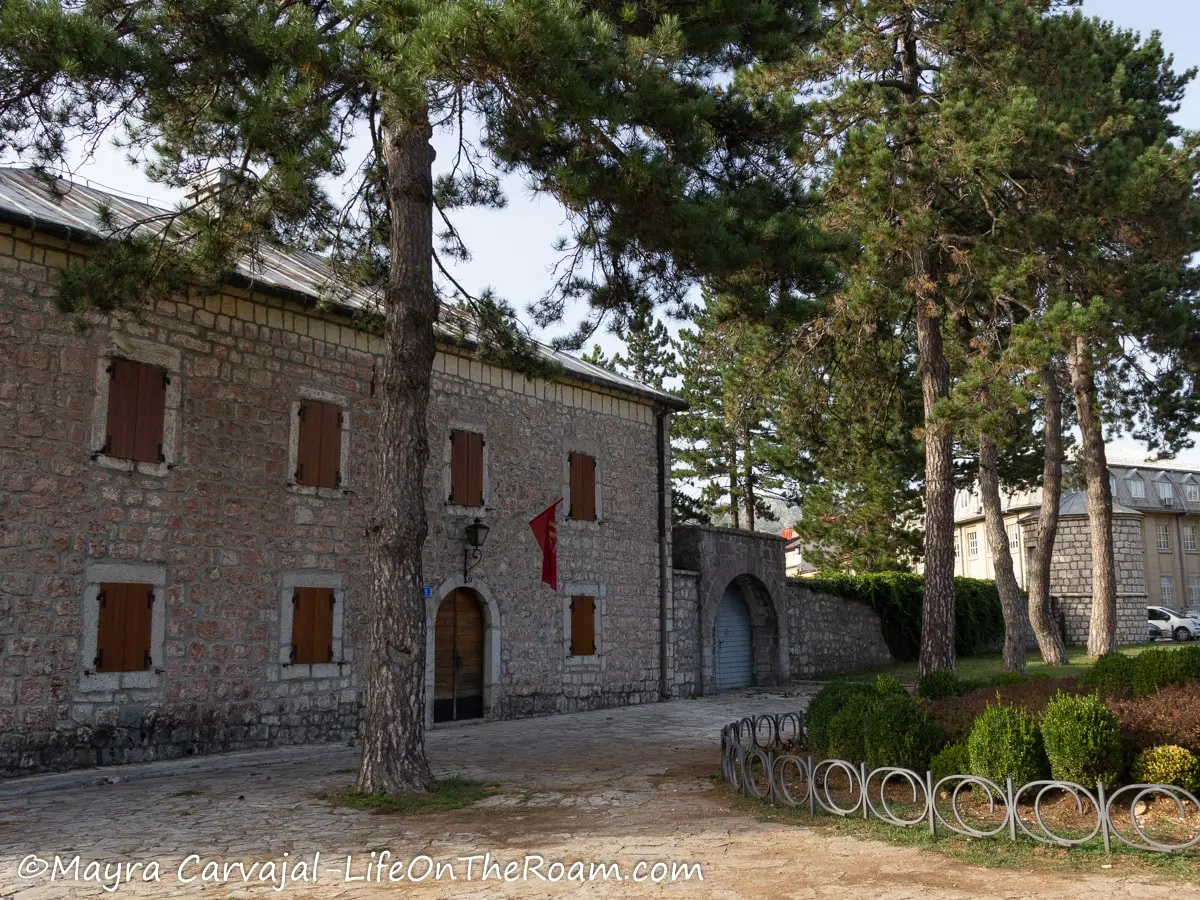
Biljarda, as in the billiard table sitting inside (the first in Montenegro). It was a gift to Petar II Petrović Njegoš, a respected ruler of Montenegro in the 19th century, buried in a mausoleum in Lovćen National Park.
This was his residence, built in 1838, which is now a museum where you can learn about the history of the country, Njegoš’ life, and see a display of furniture, documents, and garments.
This museum is for you if you’re a history buff, otherwise you may not find it that interesting.
In the courtyard there’s an archaeological museum with a lapidarium.
A separate room (with a separate entrance fee) holds a monumental relief map of Montenegro from 1917, built at a 1:10000 scale for military planning purposes during the Austro-Hungarian occupation in WWI.
Address: 5 Novice Cerovića
General admission: €5 (including the relief map)
Short on time for a full-day visit? Check out these highly-rated tours that include Cetinje in their itineraries:
Great Montenegro Tour: full day tour starting in Kotor. Hop on the cable car with great views of the bay and arrive at Njeguši for breakfast before heading to Lovćen National Park. After a walking tour of Cetinje, take a boat ride in Lake Skadar and end at Sveti Stefan.
Book this tour, with a 93% 5-star rating based on more than 585 reviews.
Private full-day Montenegro Tour: visit Cetinje, Njeguši, Kotor, Budva, and Sveti Stefan (itinerary open to changes). Includes food tastings and pickup from Podgorica, port of Kotor, Bar Marina, or Tivat.
See the most in one day with this tour, with a 94% 5-star rating based on more than 50 reviews.
Mausoleum of Bishop Danilo at Eagle Hill (Orlov krš)
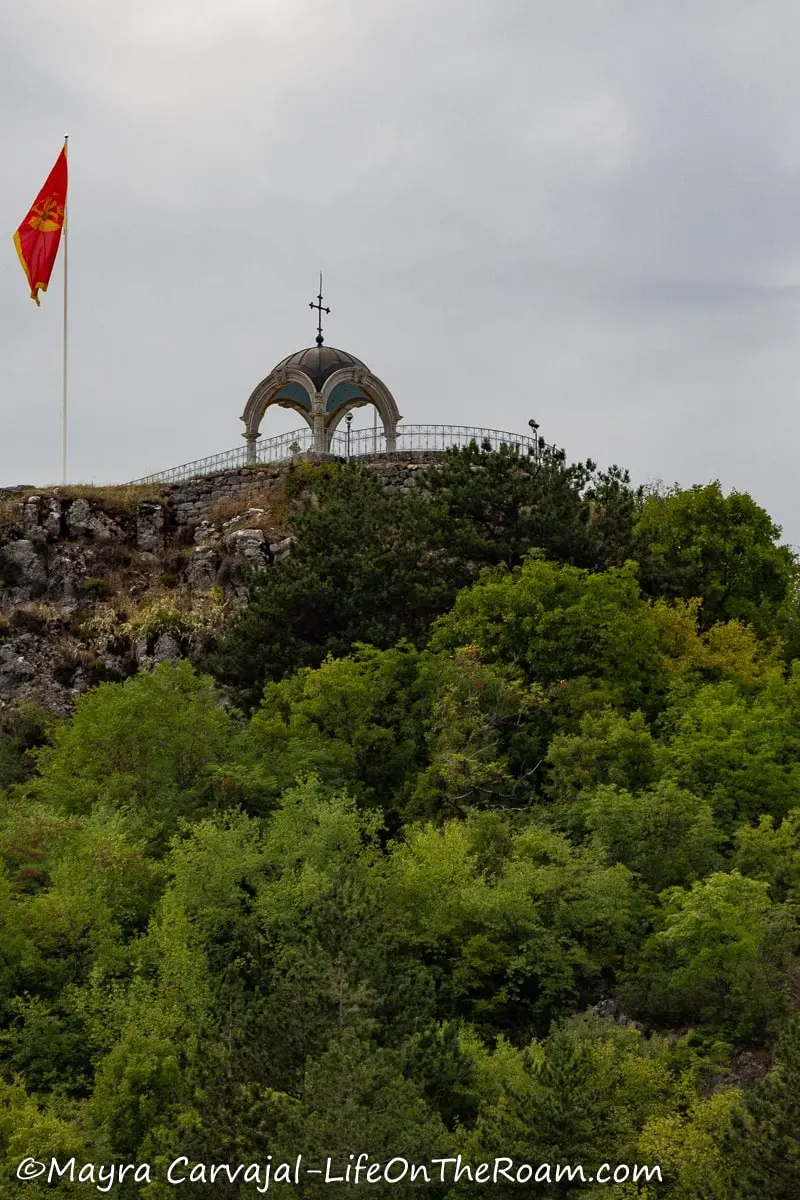
Beyond the historical significance of this place, it’s also an awesome viewpoint.
Bishop Prince Danilo became the founder of the Petrović-Njegoš dynasty when he ascended to the throne in the late 17th century. He fought the constant attacks of the Ottoman Empire and established a strong alliance with the Russian Empire.
This is his final resting place, built in 1897 and designed by French architect Fruchet. The relief work adorning the structure, done by sculptor M. Voutier, is quite remarkable.
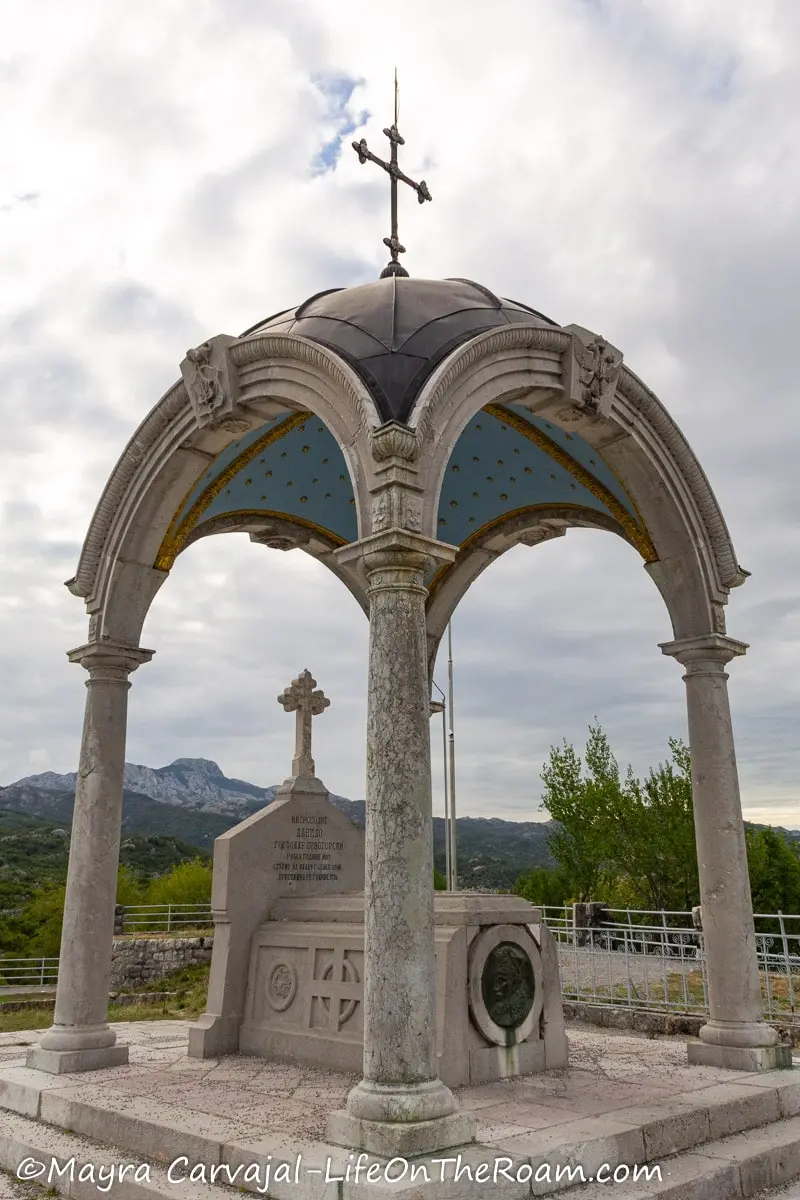
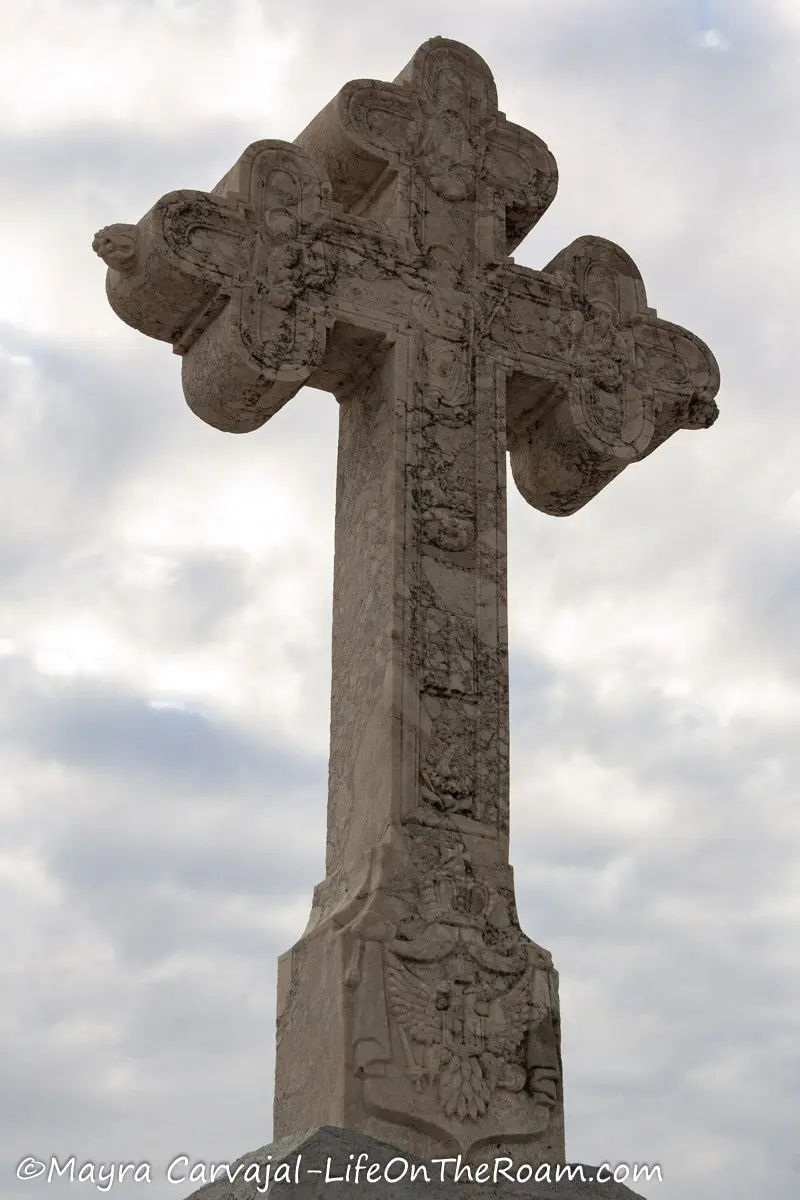
Since the mausoleum is located at the top of a hill you’ll have a panoramic view of the historic centre of Cetinje and Mount Lovćen, where you can see far away the Njegoš’ Mausoleum at the top of Jezerski Vrh, a 1,660 metres-high peak (5,446 ft.).
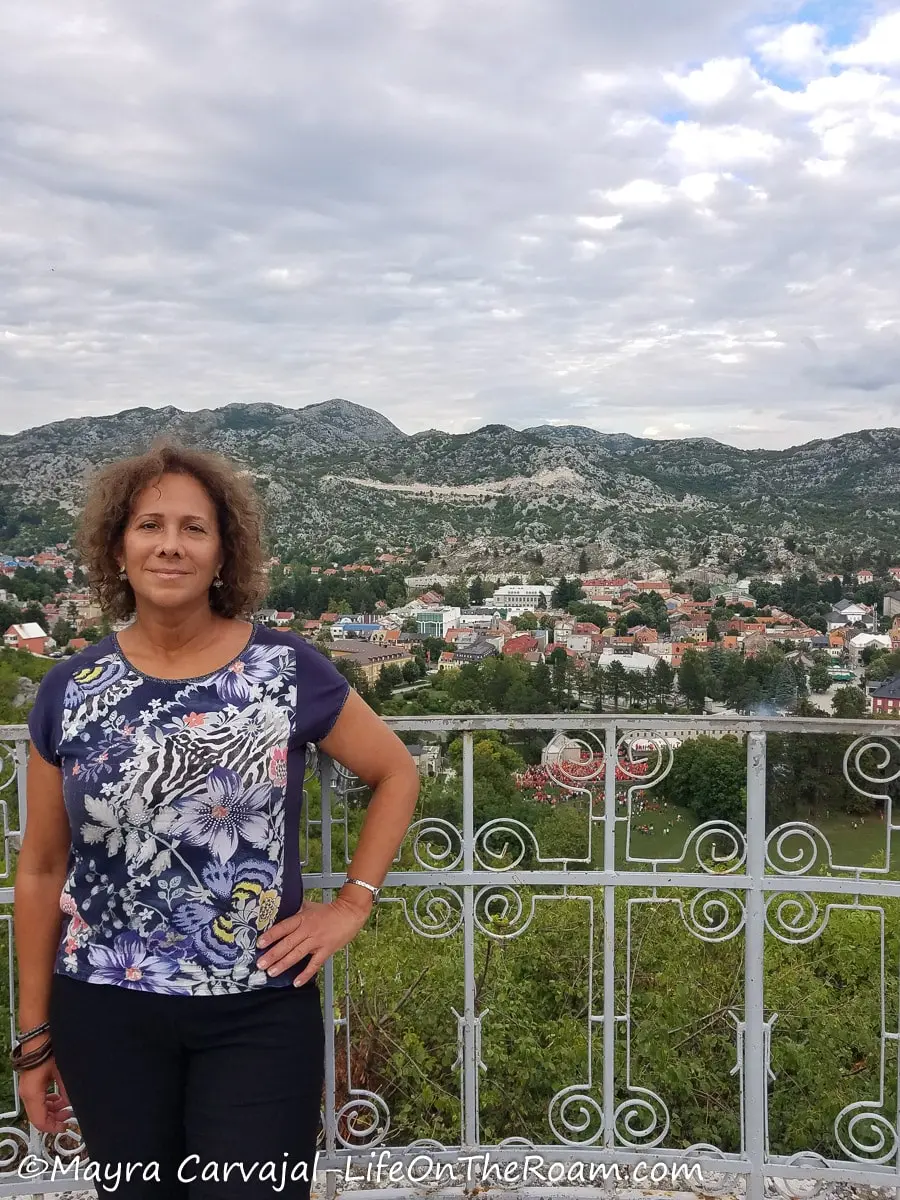
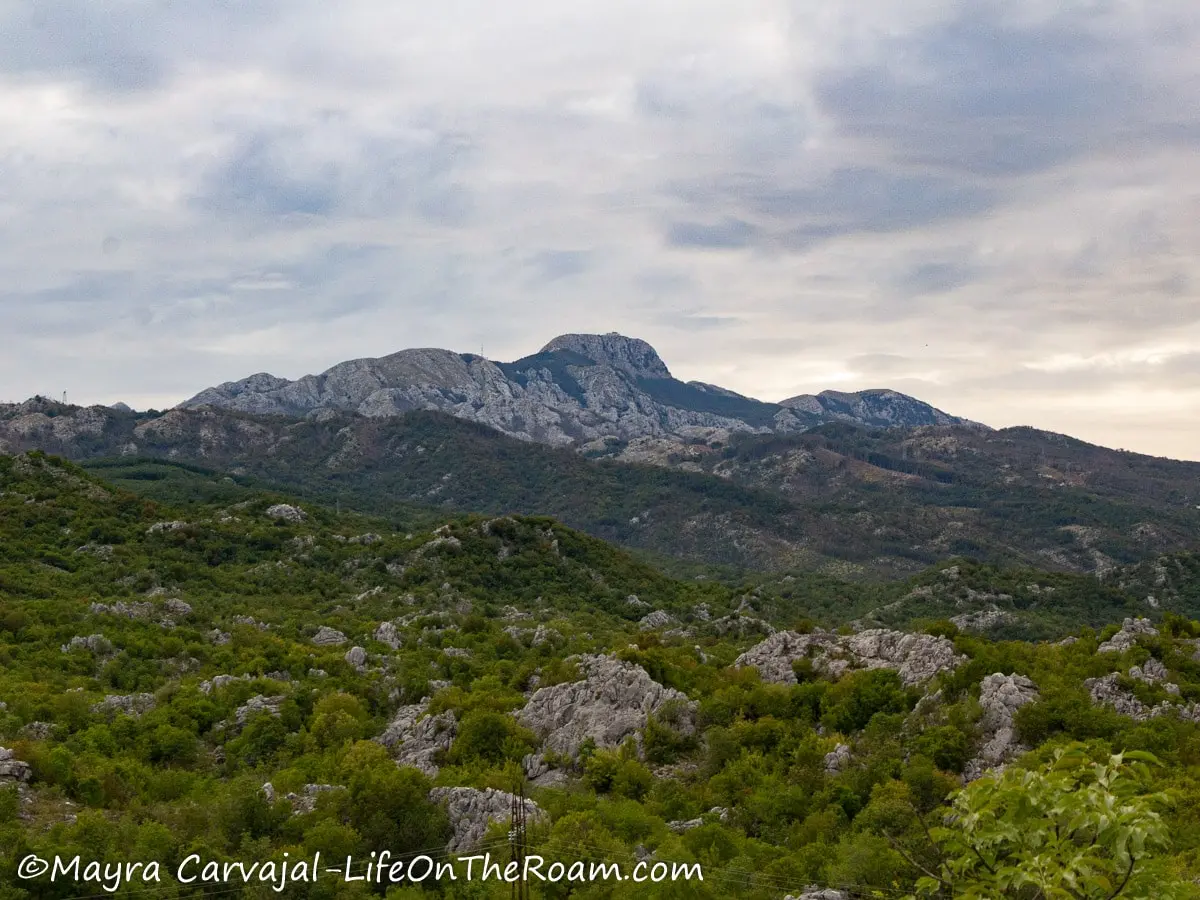
Court Church at Ćipur
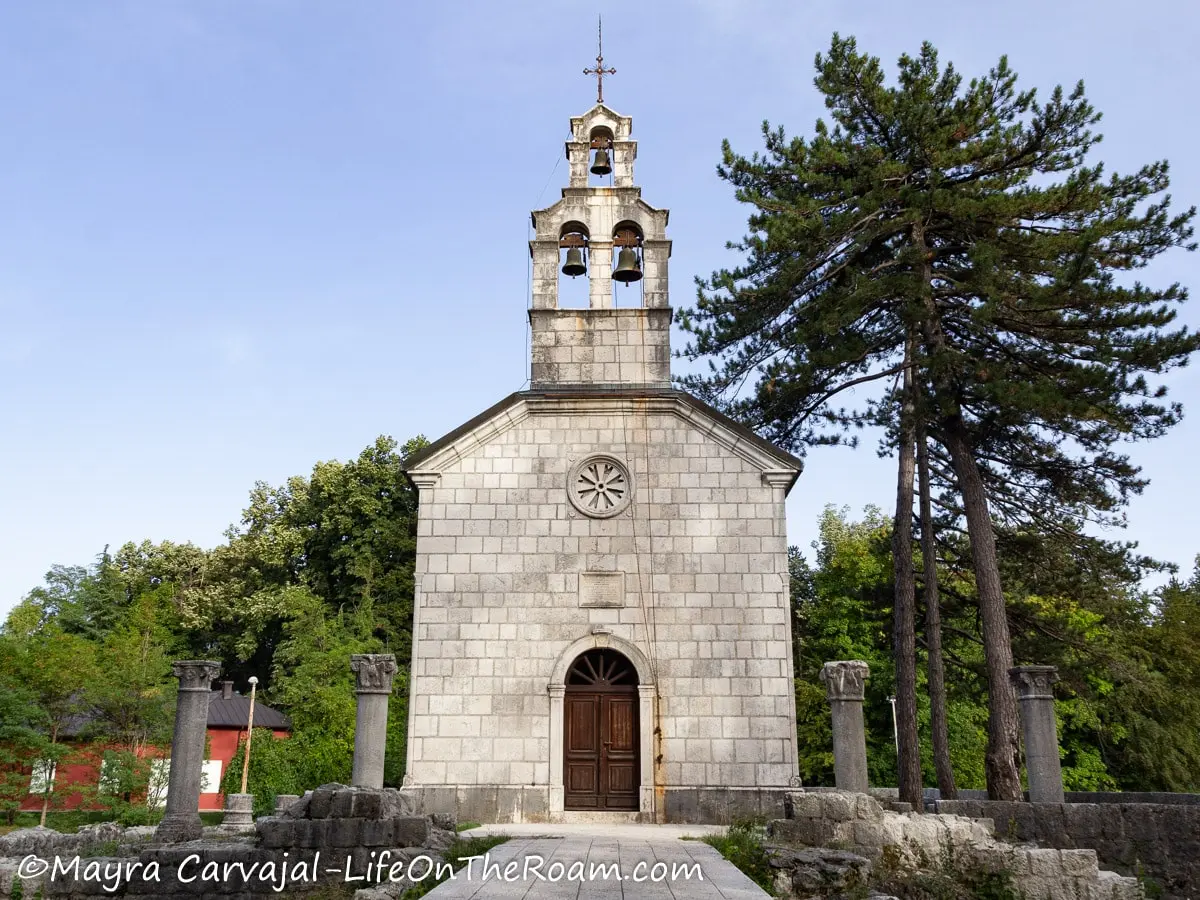
Prince Nikola built this church in 1886 (also known as Ćipur Church) as a memorial to the Crnojevići monastery that stood here before. The monastery was an important religious and political centre dedicated to the nativity of Mary, built here by Lord Ivan in 1484 and later demolished by the Turks in 1692.
The remains of the monastery surround the church, including the double colonnade that was part of the porch. At the Museum of History you can see part of the column capitals.
This church has a beautiful gold-plated iconostasis from the 19th century and houses the tombs of King Nikola, Queen Milena, and Lord Ivan Crnojević.
Address: Štampar Makarije
The Architecture of Cetinje
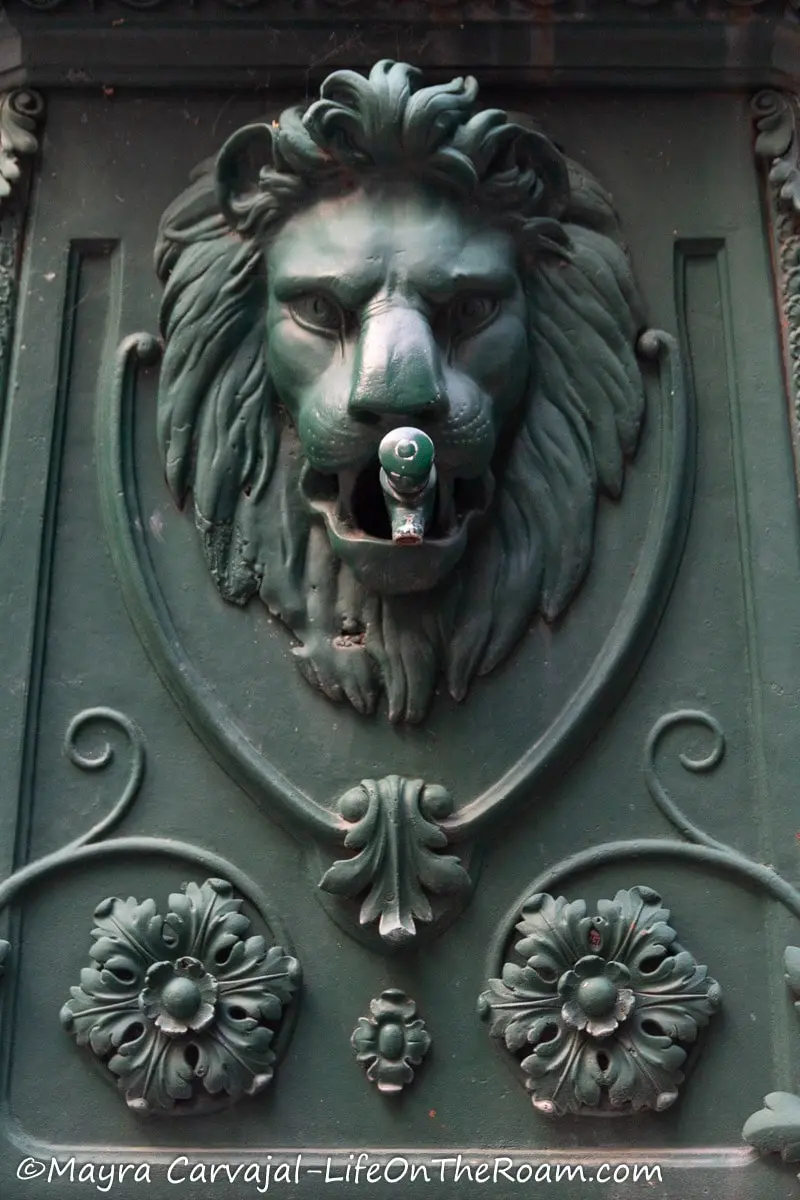
From its time as the nation’s capital, part of Cetinje’s legacy are elegant buildings in wide streets and stately residences designed by renowned architects to serve as diplomatic missions to the former Kingdom of Montenegro.
You can identify several styles including Baroque, Neo-Romanesque, and Art Nouveau.
They were built between the 19th century and the early 20th century along Njegoševa Ulica, the main street of the city, and other major streets.
Many are painted in vibrant colours, giving Cetinje a cheery vibe. Although some could receive a little bit of TLC, you can still appreciate their unique and nice architectural details. Here are some examples:
Former Embassy of France
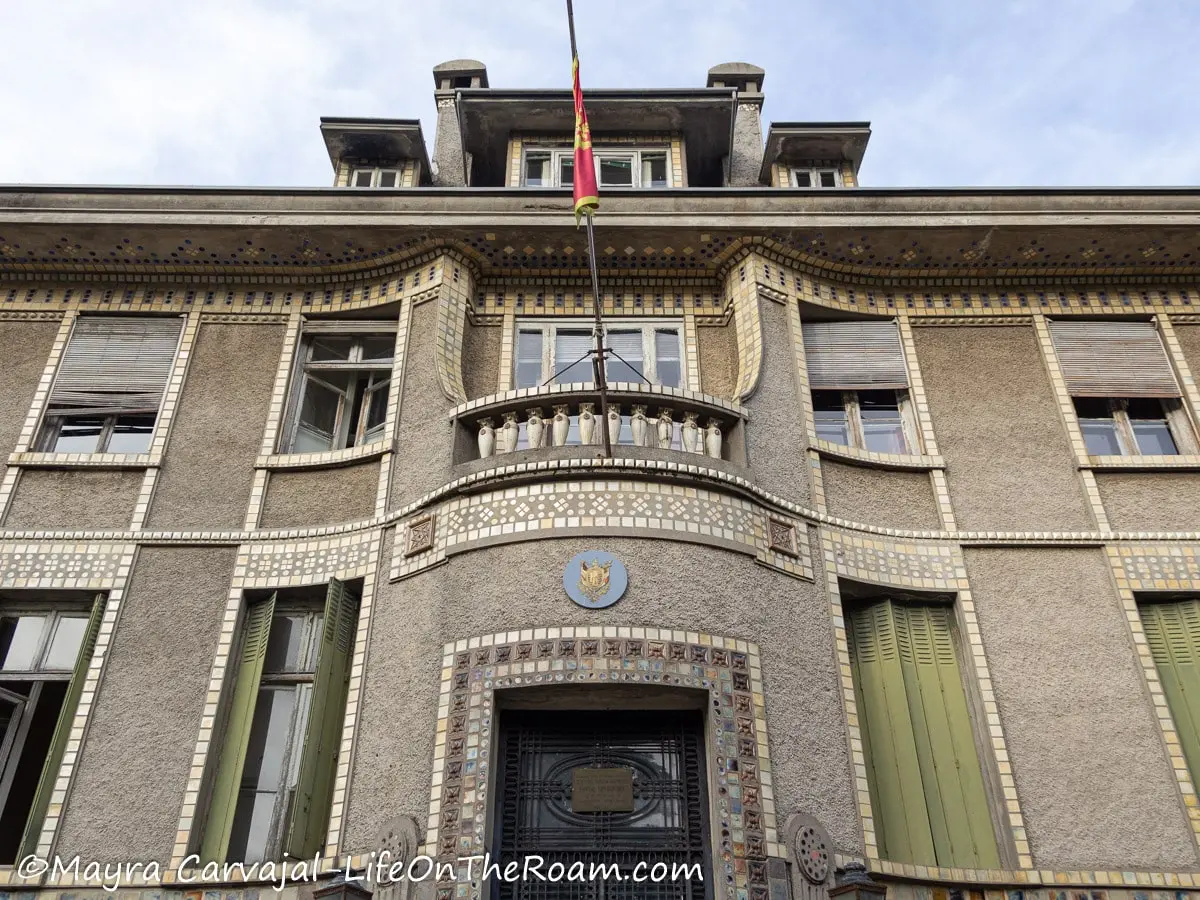
Compared to the rest of the embassies the aesthetic of this house, built between 1909 and 1910 and designed by French architect Paul Gaudet, is quite unique.
Notice the round and square multicolour ceramic tiles that decorate door and window frames, the soffit, and the edges of the building, which was the first in the Balkans to use reinforced concrete.
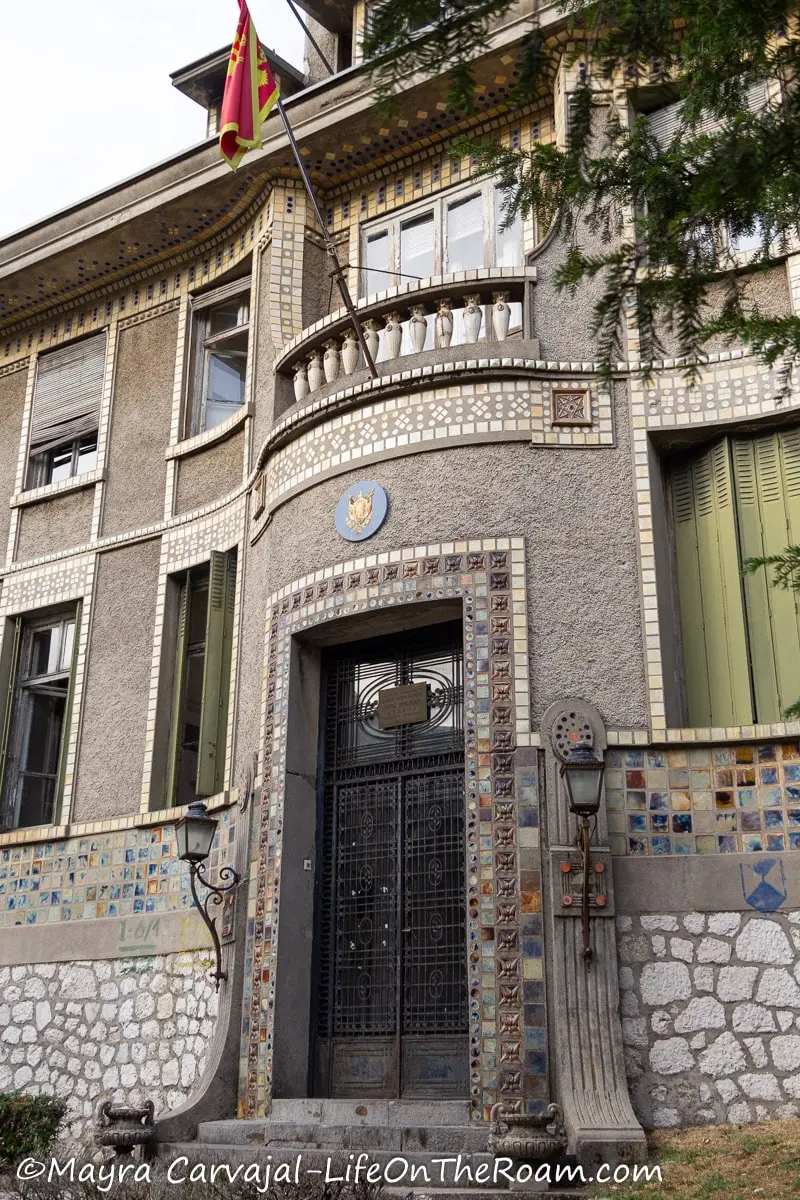
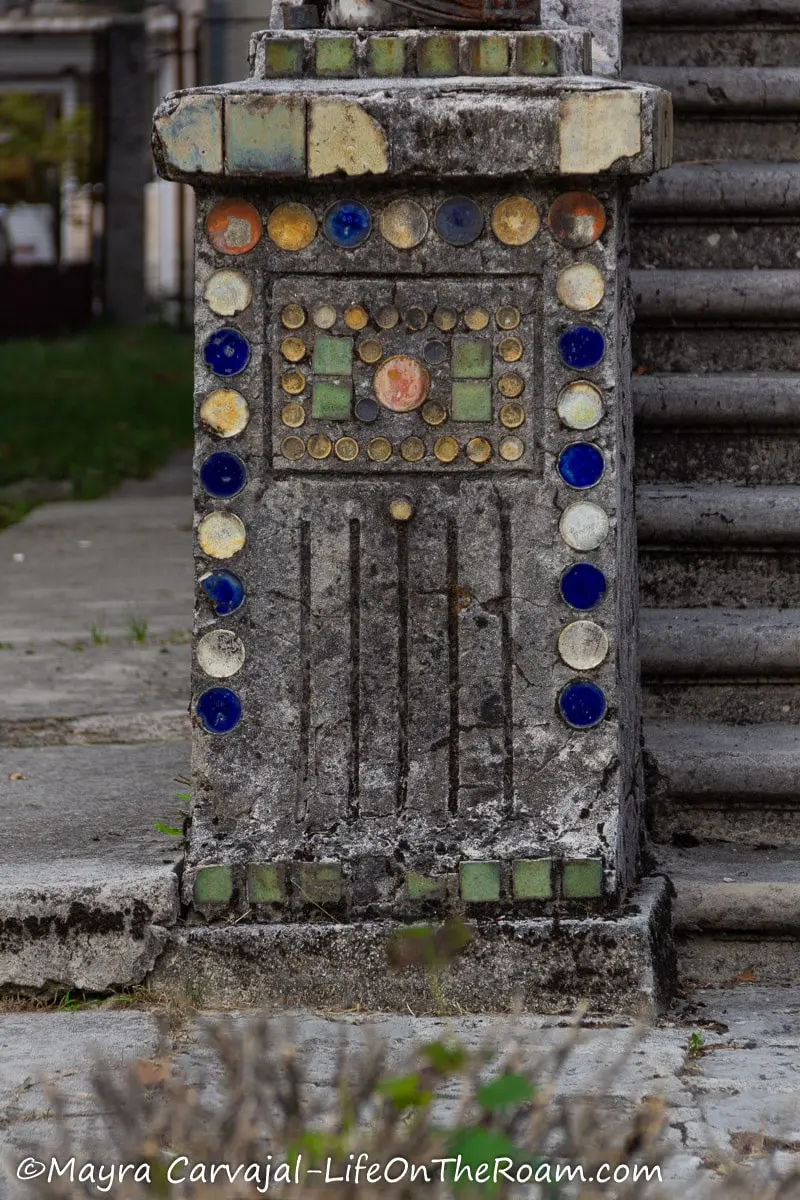
The French diplomatic mission occupied this building until 1915. Now it’s part of the Central Library of Montenegro, where they hold a collection of old and rare books.
Address: 74 Njegoševa Ulica
Former British Embassy
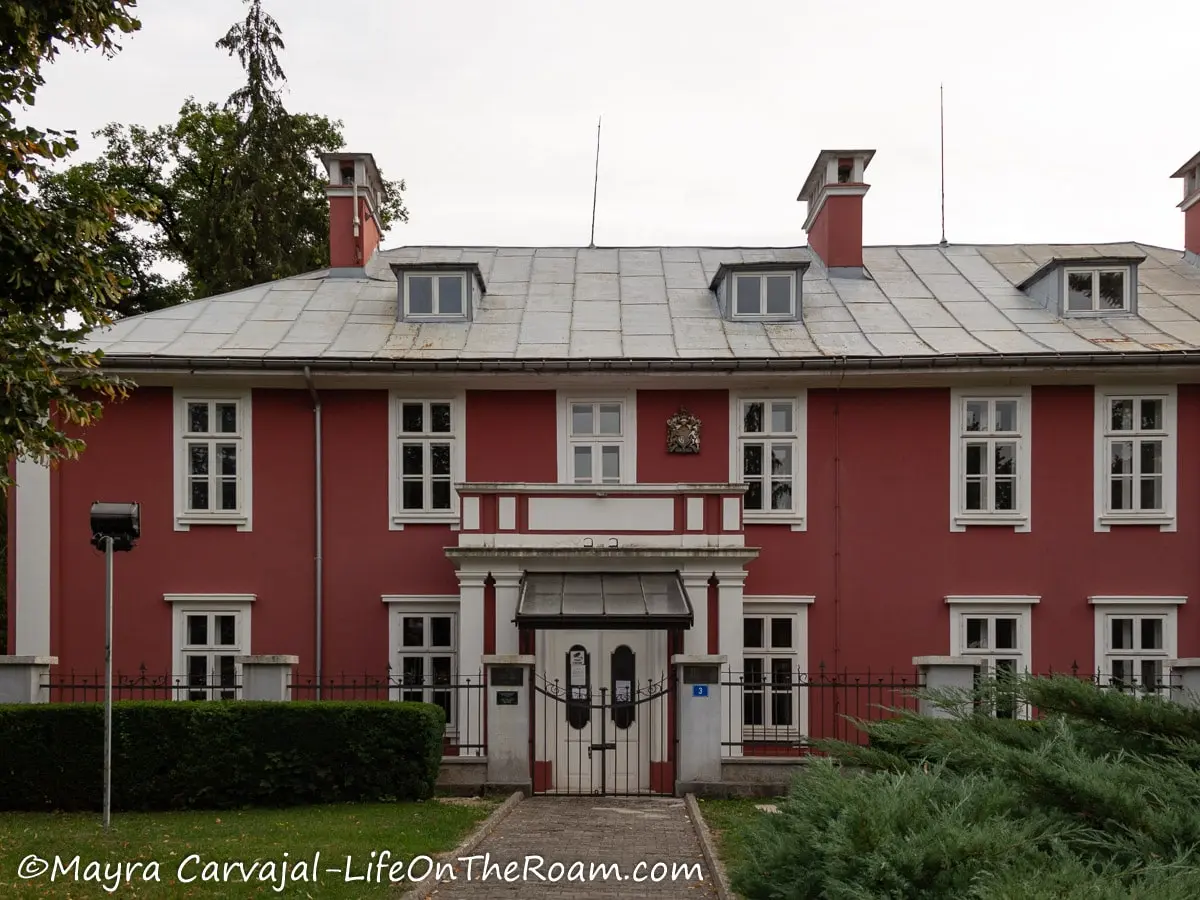
This is a more subdued building compared to the other embassies, and it’s described as a “cottage”.
It was built in 1912 and designed by English architect Harty. At some point it was the residency of the President of Montenegro and it’s now a music academy.
Address: 3 Njegoševa Ulica
Former Russian Embassy
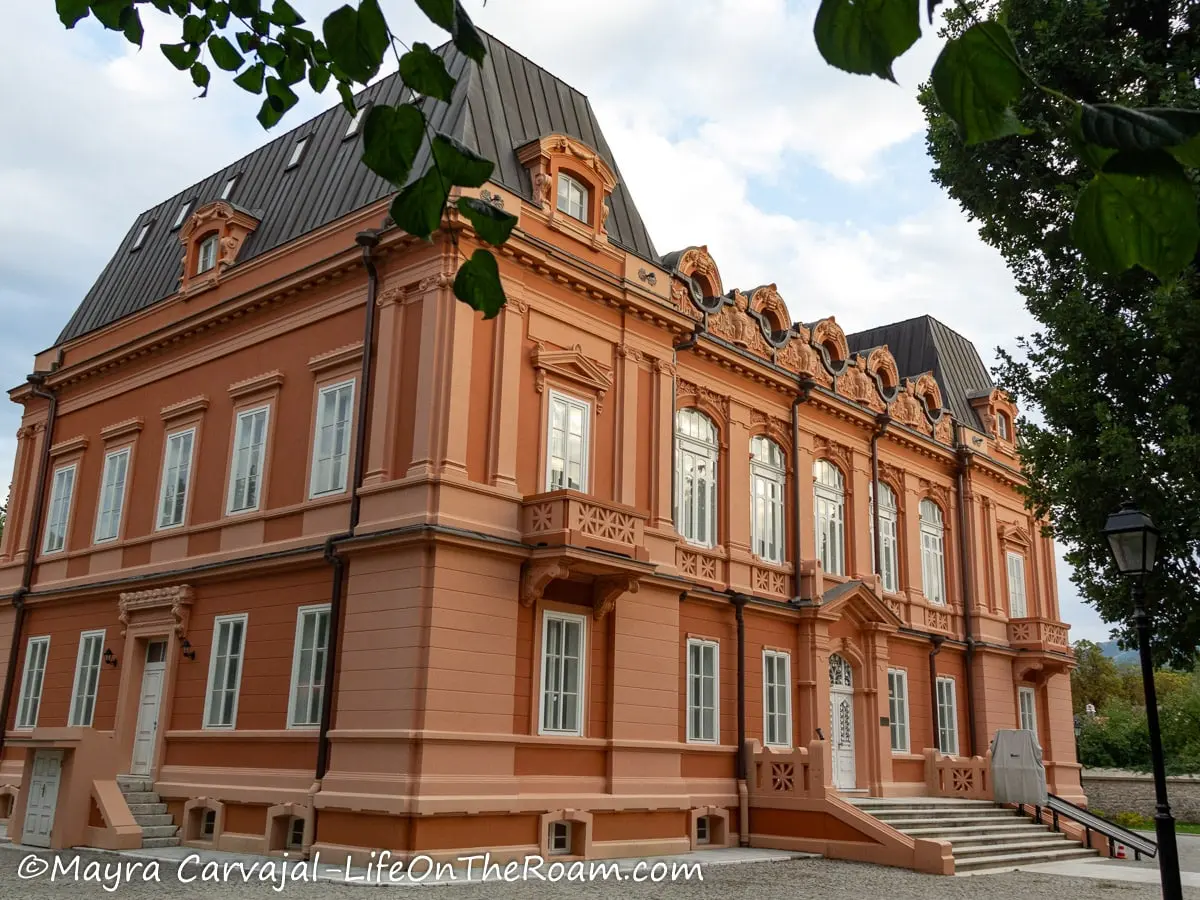
Of all the embassies I saw, this one was the most impressive. Not only thanks to the pretty details of the Late Baroque-style building, but also because of its black ornamental fence.
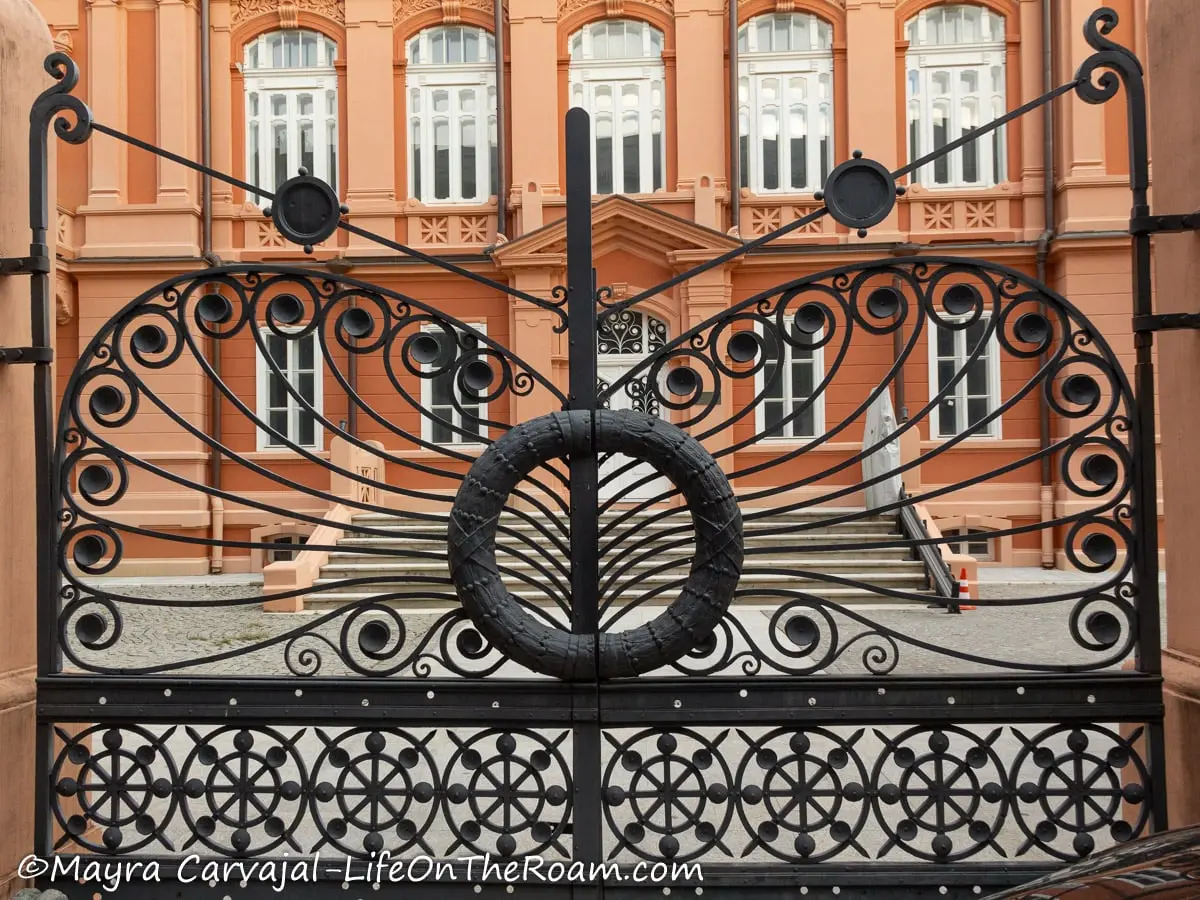
It was designed by Italian architect Corradini and completed in 1903. Today, it’s part of the university.
Address: 6 Vojvode Batrica
Vlah Church
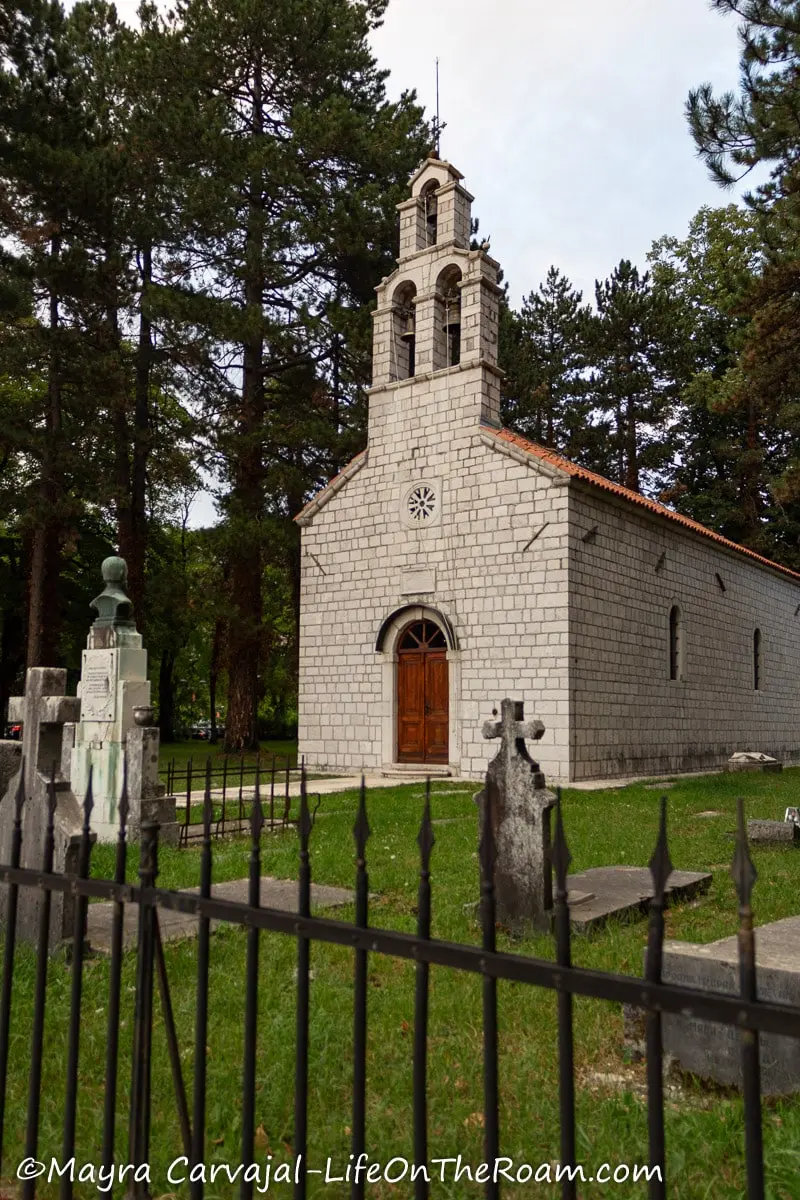
The Vlah Church (Vlaška Crkva) standing here, also known as the Church of the Nativity of the Virgin, was reconstructed for the last time in 1864. The original one was built around 1450 in a cemetery.
An interesting detail is the surrounding fence, made out of 1,544 barrels seized during battles against the Ottoman invasion. Quite a statement, don’t you think?
Inside there’s an iconostasis from 1878 and outside you’ll find tombs of several prominent figures of Montenegro’s history.
Address: corner of Jovana Tomaševića and Baja Pivljanina
Pavlova Strana Viewpoint
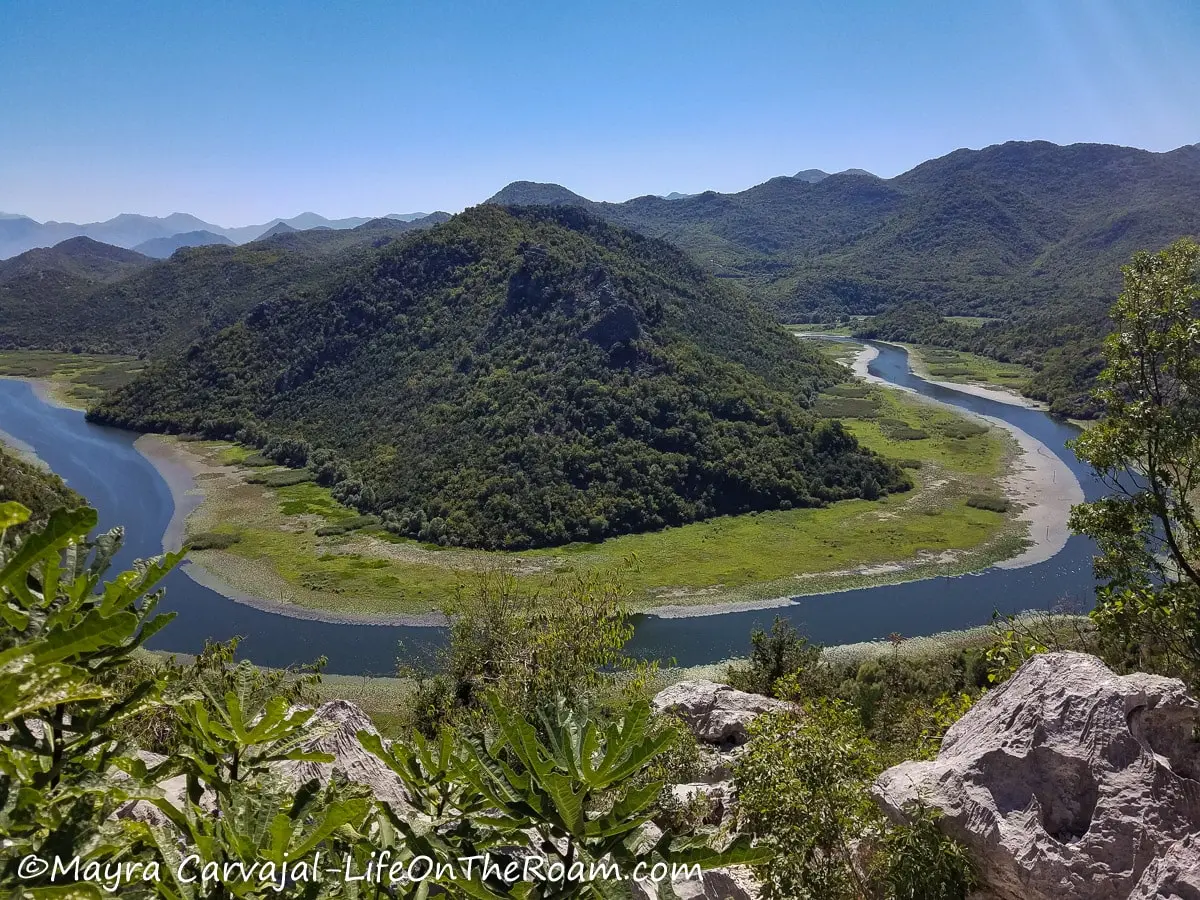
If you really like what you see in my picture above you can get there by taking a detour to reach the Pavlova Strana viewpoint.
After a 30-minute drive from Cetinje you’ll catch a wonderful view of the horseshoe section of Rijeka Crnojevića, the river that feeds Lake Skadar.
You’ll drive eastbound on road M2.3 from Cetinje and go past Meterizi towards Rvaši, where you’ll turn right to drive southwest to reach the Pavlova Strana Viewpoint.
Why do I have to drive further when I can clearly see a shorter way off Meterezi? I hear you. That shorter way is ridiculously narrow (as in only one car can drive through), with hairpin turns, and has a cliff with no guardrails on one side. Your choice!
Once you get there, you may have to drive a little bit further to find parking (and also see different views) as there’s barely anywhere to park, especially during the busy season.
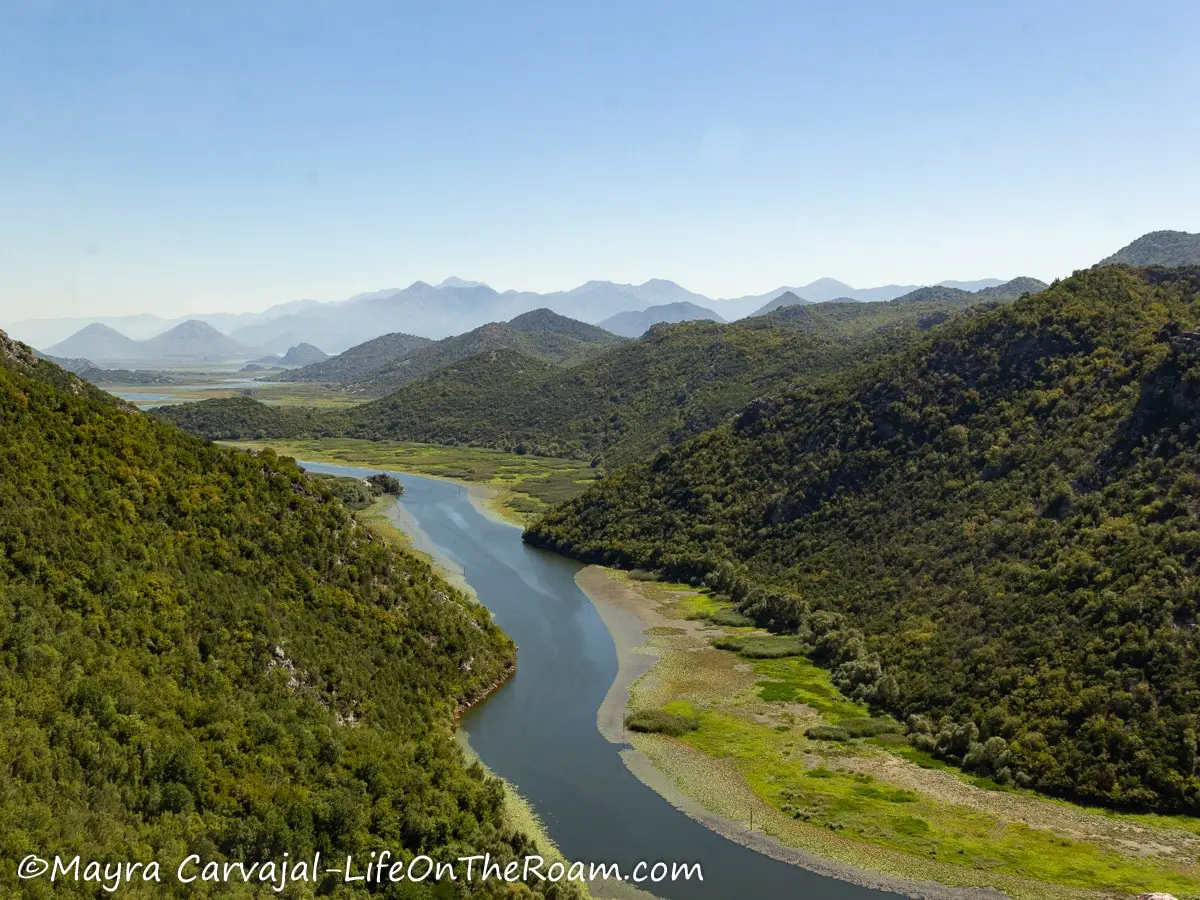
For a higher view, you can walk up on the road leading to Meterizi or have a drink and a bite to eat at the Konoba Ceklin bar/restaurant.
If you want to leave the drive to someone else, you can join this highly-rated tour, which includes a stop at Cetinje, Pavlova Strana, and other interesting sites:
Montenegro Highlights & Lake Cruise: full day tour that includes a 1-hour cruise in Lake Skadar and stops in Cetinje, the villages of Rijeka Crnojevića and Njeguši, Kotor’s serpentine road, and the Pavlova Strana viewpoint. 10 people max.
Check out this tour, with a 90% 5-star rating based on more than 20 reviews.
Lipa Cave
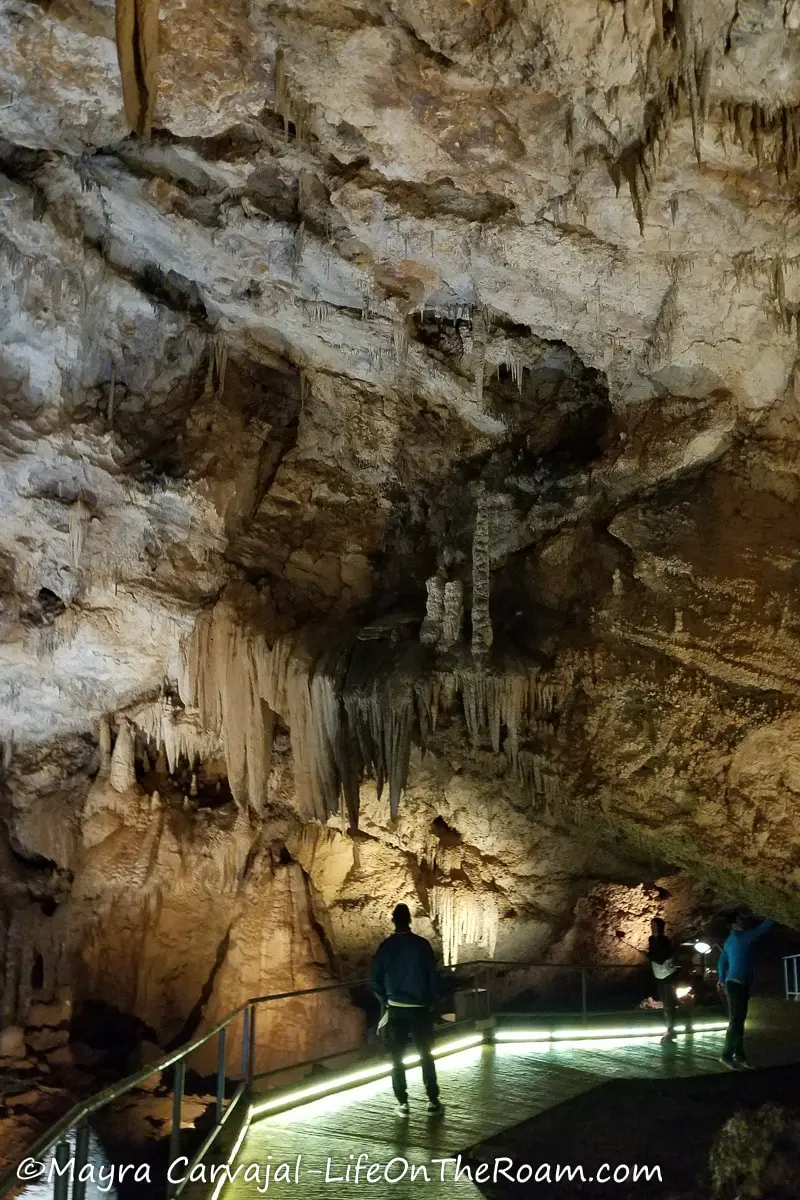
If you get excited at the chance to see wonderful natural formations in the form of stalactites, stalagmites, and the likes, a guided walk through Lipa Cave is something you won’t want to miss.
The cave is about 10 minutes from Cetinje by car so it’s easy to add it to your itinerary.
You can only enter the cave by taking a guided tour. Secure your spot here.
Want to learn more about this attraction? Check out my complete guide to Lipa cave.
Day Trip from Cetinje to Lovćen National Park and Njegoš Mausoleum
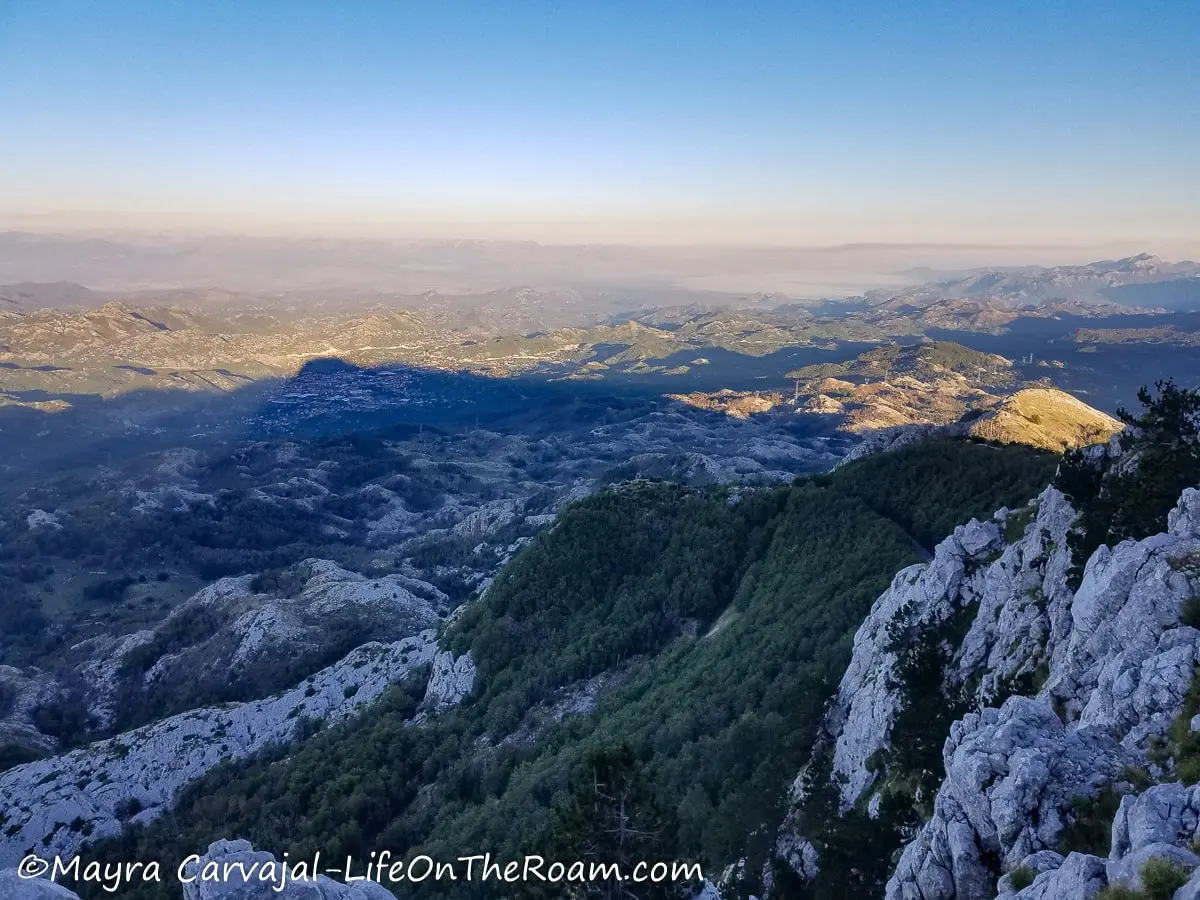
To enjoy some of the best views in the country and do some hiking and biking near Cetinje, plan a day trip to Lovćen National Park. It’s located within the Municipality of Cetinje, about 30 minutes from the city by car.
At Mount Lovćen you’ll also find the Njegoš Mausoleum, the highest in the world. It was built on a mountain peak from where, on a clear day, you can see as far as Albania and Italy.
Curious? Read my blog post about what to do at Lovćen National Park.
Taste Local Dishes
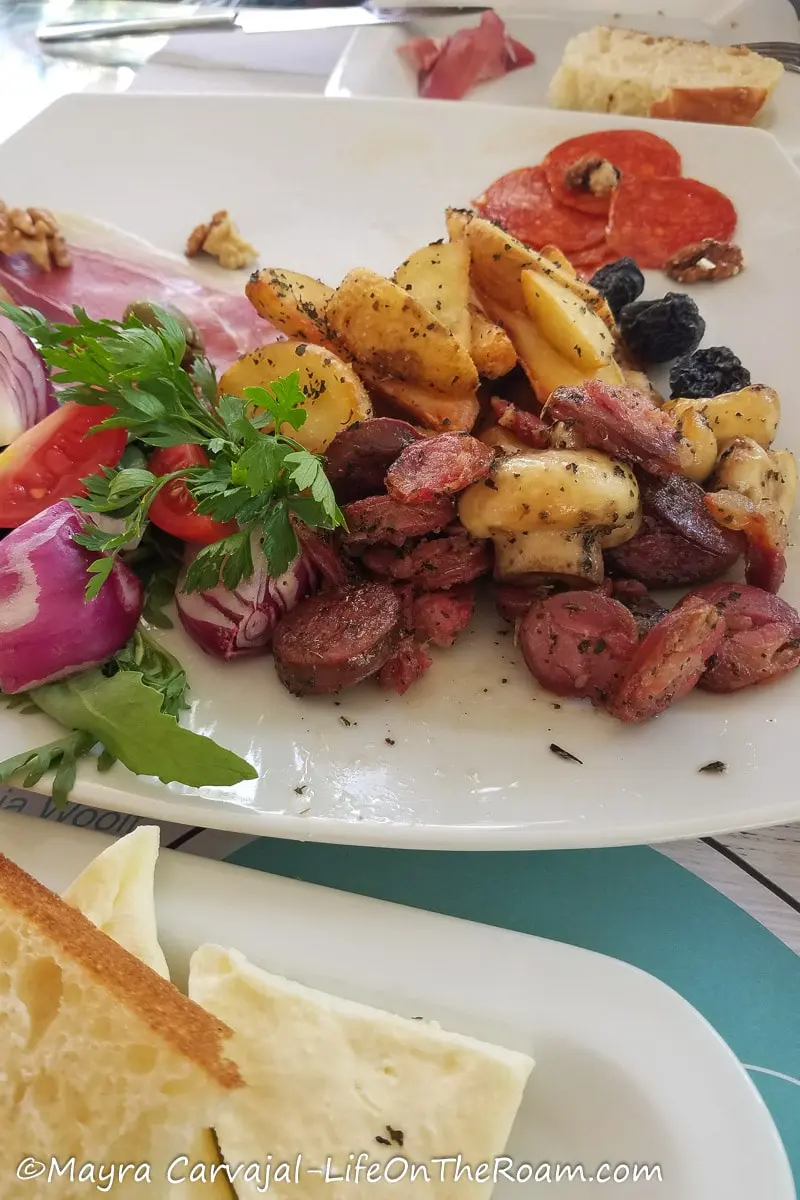
If you can’t make it to the nearby village of Njeguši you can try some local products in Cetinje, such as the pršuta (local prosciutto) and the njeguški sir (local cheese). At DVOR Restobar, which has a lovely covered terrace on a wide street, we ordered the Montenegrin Platter. It serves the two items above with bread, homemade cured sausage, olives, honey, bacon, potato wedges, and mushrooms.
My husband liked the meat section and I liked everything else (I don’t eat meat). I also enjoyed their strong Kruna (grape brandy).
Where to Stay in Cetinje
An overnight stay (two nights better, if possible) is a good timeframe to visit most of the sites in and around Cetinje. It’s also perfect to take a break from the more popular (and way busier) destinations like Budva and Kotor. The options below, with free wifi and free parking, are located right in the city:
Apartman L&M: clean, modern, and well-equipped units offering different configurations: kitchen or kitchenette, mountain or city view, some have private bathrooms and balconies. All units have AC, satellite TV, access to a garden with BBQ, and free bikes.
Book your stay here, with a rating of 9.3/10 based on more than 350 reviews.
Casa Calda Apartments: units with TV, kitchenette with a mini-fridge, seating area, private bathroom, and access to a garden with BBQ. These units are better for a spring or fall visit as there’s no AC.
Stay at Casa Calda, with a rating of 9.0/10 based on more than 540 reviews.
Downtown Apartment: 2-bedroom, 1 bathroom apartment with garden views and a patio. Comes with AC, TV, a well-equipped full kitchen and a washer and dryer.
Book your stay at this place, with a rating of 9.6/10 based on more than 75 reviews.
Here’s a map with the location of all the attractions:
How to Get to and around Cetinje
Cetinje is a small and walkable city. You only need to rent a car if you’re planning to go to Lake Skadar, Pavlova Strana, Lipa cave, or Lovćen National Park (although there are hiking trails to the last two if you want a very active visit).
If you come by bus, below you can find how long it takes to get here from these popular spots:
-Budva: around 45 minutes
-Kotor: around 1.25 hours
-Herceg Novi: around 2.5 hours
-Tivat: around 1.25 hours
-Bar: 1.75 hours
Most routes have frequent departures throughout the day. For schedules and costs check www.bustickets4.me
Note: If you buy the tickets online you must print them as drivers don’t accept mobile tickets.
As the former Old Royal capital of Montenegro, Cetinje’s elegant streets reflect its glorious past. History, art, and architecture play an important role in this city located up in the mountains. If you want to visit another historic place up in the heights of a mountain, read my blog post about the Old Town of Bar.
YOU MAY ALSO WANT TO READ
BOOKING FLIGHTS AND ACCOMMODATIONS
Book your flight without losing your shirt
We check Momondo to find great deals to book our flights. Also, check Great Escape: it combines the listings from Expedia, Kiwi, Kayak, (and Skyscanner on the premium service) to find the best airfares.
To find a place to stay for less
Booking.com: this site combines everything under the sun. You’ll find hotels, apartments, B&B, hostels, rooms, etc., with all sort of filters to make your search a breeze.
Hotwire: the first site I check when we plan to stay at a hotel for a few nights. You can save anything from 20% to 60%. Use the search filter to find what you want and you’ll end up with three listings that match your criteria. You’ll know which one you’ll get after you book. If you can handle a little bit of uncertainty you can score big savings.
House Sitting: you take care of people’s pets and house for free while staying for free. It’s the closest thing to experiencing a place “like a local”. But it comes with responsibilities… Are you an animal lover? It may become your new way to travel.
To get travel insurance
SafetyWing: travel medical insurance that gives us peace of mind knowing that we’re covered in case of emergency. It’s convenient, affordable, and suitable for digital nomads who spend a long time outside their home country.
Check the full list of travel resources on my Resource Page for more options and savings
